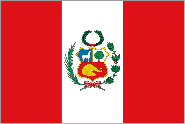Rural
Taxonomy Term List
Building Resilient Communities, Wetland Ecosystems and Associated Catchments in Uganda
The impacts of climate change, coupled with other human and environmental stressors, is increasing degradation of wetlands and their associated ecosystem services in Uganda. This is negatively affecting the livelihoods of the people living in and around the wetlands – around 4,000,000 people. In fact, over 80% of the people living adjacent to wetland areas in Uganda directly use wetland resources for their household food security needs.
Given that wetlands are highly vulnerable to changes in the quantity and quality of their water supply, climate change will most likely substantially alter ecologically important attributes of wetlands and will exacerbate the impacts from human activity. On the other hand, the loss of wetlands could exacerbate the impact of climate change in as they provide fundamental services that contribute to mitigation of such impacts.
Implemented by Ministry of Water and Environment in partnership with Ministry of Agriculture Animal Industry and Fisheries and Uganda National Meteorological Authoritym, with funding from Green Climate Fund, United Nations Development Program (UNDP) and Government of Uganda, the 8-year project Building Resilient Communities, Wetland Ecosystems and Associated Catchments in Uganda (2017-2025) is addressing the management of critical wetlands affected by a changing climate.
While restoring wetlands and their ecosystem services, based on the wise-use principles and guidelines outlined by the Ramsar Convention on Wetlands, it is also supporting sustainable land management practices and reforestation, resilient agricultural practices and alternative livelihoods for communities living in these areas. This support will reduce the pressures on the wetlands. Finally the project is strengthening the climate information and early warning systems to support these communities to make climate-resilient decisions. Up to 800,000 people in 24 districts of East and Southwestern Uganda will directly benefit.
The project is currently in its 5th year of implementation. Achievements to date include:
- 38,941 ha of degraded wetlands restored;
- 6,655ha of degraded catchment rehabilitated and/or restored;
- An increase of 64% in agricultural income and livelihood among households;
- 38% of the population have access to improved climate information.
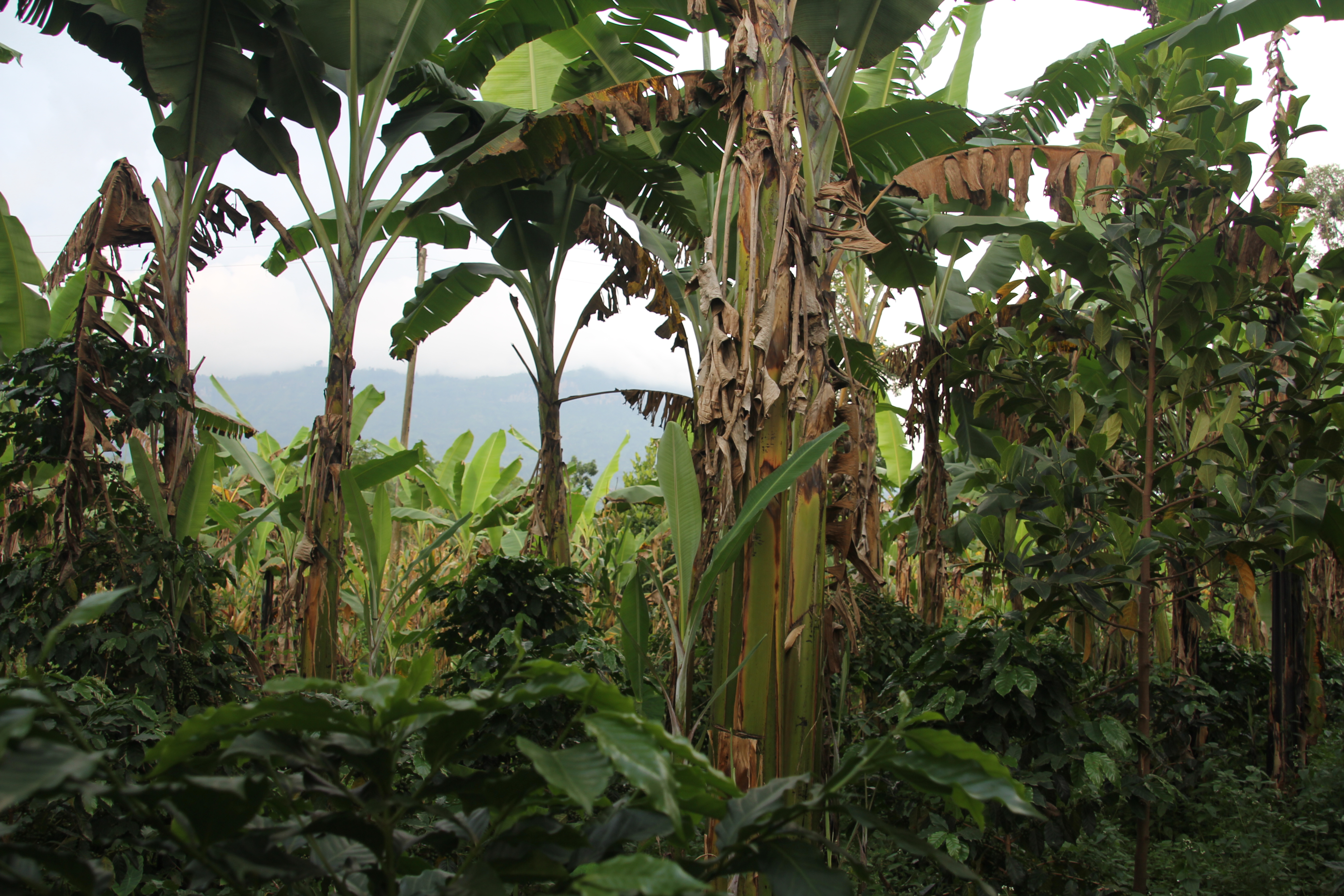

News article
News Article: New Vision (4 February 2019) - Rugunda Launches Wetlands project
News Article: Red Pepper (4 February 2019) - Govt Urges Ugandans to Support Restoration of Wetlands
ProDocs
Uganda, wetlands provide many important functions to the people, particularly in the context of food security. This is in addition to its role as a habitat for biodiversity that is also important for the economy. According to a recent 2013 study on the value of wetlands in Uganda, several market and non-market benefits are identified: “The market benefits include water for domestic use and watering of livestock, support to dry season agriculture, provision of handicrafts, building materials, and food resources such as fish, yams, vegetables, wild game, and medicine. The non-market benefits include flood control, purification of water, and maintenance of the water table, microclimate moderation, and storm protection. Wetlands also serve as habitats for important flora and fauna, have aesthetic and heritage values, and contain stocks of biodiversity of potentially high pharmaceutical value. Over 80% of the people living adjacent to wetland areas in Uganda directly use wetland resources for their household food security needs.” In addition to supporting food and water security, wetlands also support income generation and employment. “Of a total population of 34 million Ugandans, it is estimated that wetlands provide about 320,000 workers with direct employment and provide subsistence employment for over 2.4 million.”
Wetland health and resilience can easily be compromised by climate change impacts. Climate change models for Uganda predict that temperatures will continue to increase, and there will be changes in the seasonal distribution and amount of rainfalls, more frequent extreme weather events, and increases in the frequency of heavy rainfalls. Increases in temperature and erratic rainfall will result in more frequent and intense floods, droughts and heat waves, which will directly threaten wetlands and livelihoods that rely on its healthy ecosystem services. Hydrologic and drainage maps of the project targeted sites (the eastern and southwestern Wetlands Basin) indicate that most of the freshwater inflows pass through the wetlands and natural forests. These systems have played an integral role in maintaining the quality of water over the centuries. However, over the last three decades, climate change impacts, as well as other baseline (non-climate) issues such as excessive sedimentation and non-native species invasions, have resulted in substantial water quality deterioration.
Output 1: Restoration and management of wetland hydrology and associated forests
Under this sub-component, at least 760 km2 of degraded wetlands and its associated catchment will be restored and the lives of 500,000 people will be improved in selected districts of Eastern and South Western Uganda. The overall aim of the intervention is to restore the ecological and hydrological integrity of the wetland and support the development and implementation of a community-based framework for wetland management plans. This will help support climate risk management and resilient livelihoods through enhanced ecosystems services in the area.
Output 2: Improved agricultural practices and alternative livelihood options in the wetland catchment
This output will target at least 150,000 farmers including those who currently do not have secure access to irrigation, land-poor farmers, women-headed households, and the landless, to build more climate-resilient livelihoods. Investments in small-scale rural infrastructure (shallow bore wells, drip irrigation, tilling tools) for agricultural purposes, especially on-farm water management infrastructure such as dams, canals, drip irrigation systems, as well as farming best practices and crop diversification will be implemented to realize high economic return given their coverage. In addition, the output will focus on technical skills training for employment in key economic sectors viable in wetland areas, such as tourism, health and construction. Most of the beneficiaries have very low levels of education and no skills that can help them find a job. Beneficiaries will be trained in specific skills with high employability potential (e.g. earth mover, driver, assistant nurse, reception clerk in hotels, desktop publishing).Output 3: Strengthening access to climate and early warning information to farmers and other target communities to support wetland management
Output 3: Strengthening access to climate and early warning information to farmers and other target communities to support wetland management
This output will focus on strengthening access to reliable climate-related information and scaling up advisories for farmers and other target communities in the two wetland target areas, to improve the adaptation capacity of the entire population in and around the wetlands – around 1 million people. This will include the expansion of networks that generate and process climate-related data into relevant information to the scale and location of local districts, villages or communities, as well as dissemination of climate-related information/services, advisories and early warnings to communities. A strong focus of this output will be on delivering actionable climate-related information to communities, taking the form of agro-met advisories for agriculture, as well as the dissemination channels for making information available to the “last mile.”
'To destroy Uganda, destroy wetlands -- Govt official', UNDP Uganda, February 2022
'Government of Uganda and UNDP launch implementation of a $44.26 million project to restore wetlands and build community resilience', ReliefWeb, 29 November 2017
'Uganda, UNDP Sign Landmark Financing Agreement to Restore Wetlands', Chimp Reports, 23 August 2017
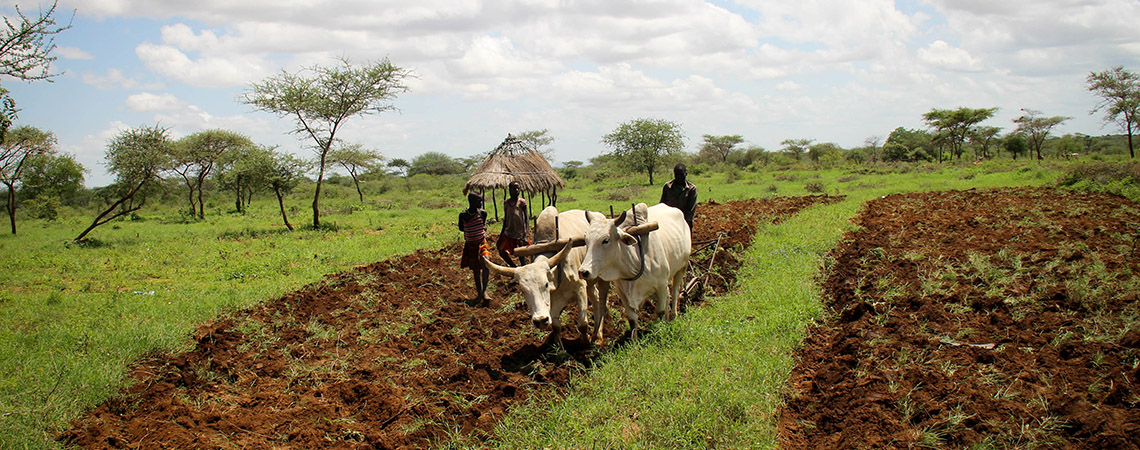
Output 1: Restoration and management of wetland hydrology and associated forests
Output 2: Improved agricultural practices and alternative livelihood options in the wetland catchment
Output 3: Strengthening access to climate and early warning information to farmers and other target communities to support wetland management
Solomon Islands Water Sector Adaptation (SIWSAP)
The impacts of climate change, particularly sea-level rise and pronounced droughts have severe consequences on water and sanitation in the country.
The areas which are most vulnerable to sea-level rise are low-lying islands, atolls and flat deltaic regions at the mouth of larger rivers. Intrusion of salt water from rise in sea level has affected groundwater resources, especially freshwater aquifers (lens) in small atolls and low-lying islands that rely on rainfall or groundwater for their freshwater supply. Droughts have severely affected water supplies and have also damaged crops and livelihoods.
Likewise, climate-related impacts on the quality and quantity of water has a gender dimension; in the context of the ethnic tensions, the safety and security of women and girls are compromised as they need to travel further to collect water, also leading to less time for other activities.
This project (2014 - 2019) focused on improving the resilience of water resources to the impacts of climate change, in order to improve health, sanitation and quality of life, and sustain livelihoods in target vulnerable areas.
For updates on UNDP Early Warning Systems and Climate Resilient Development projects, click here.

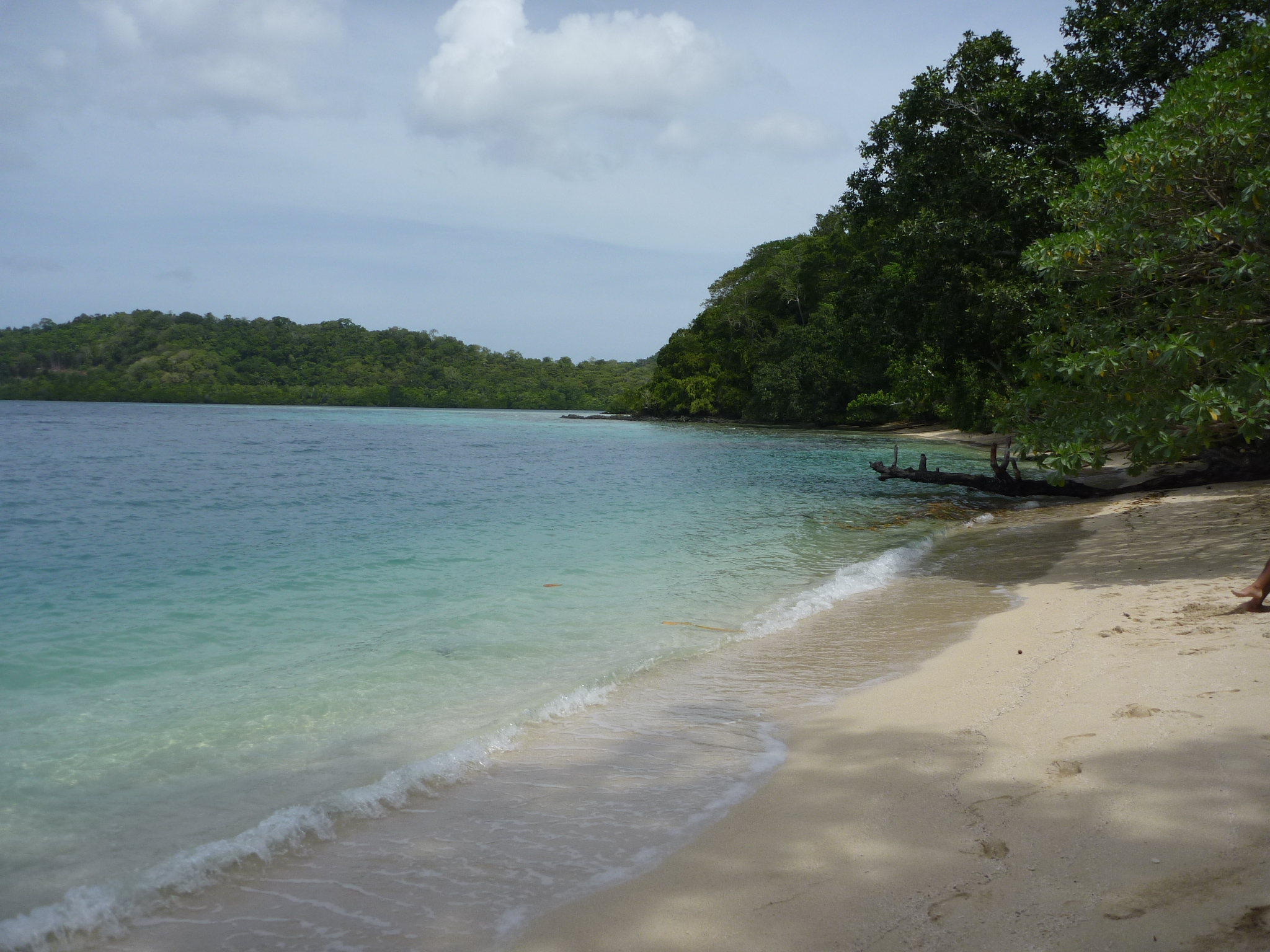
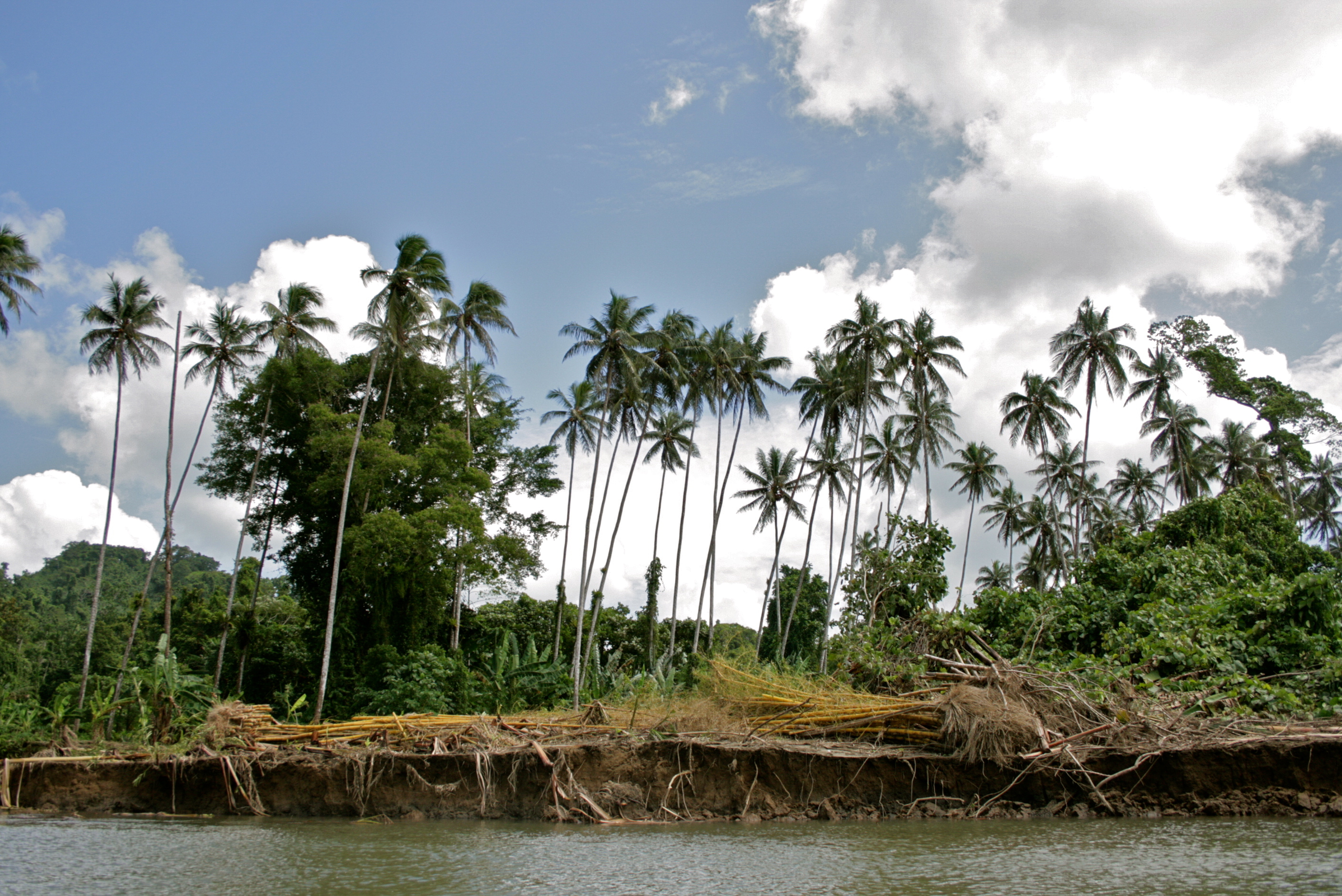
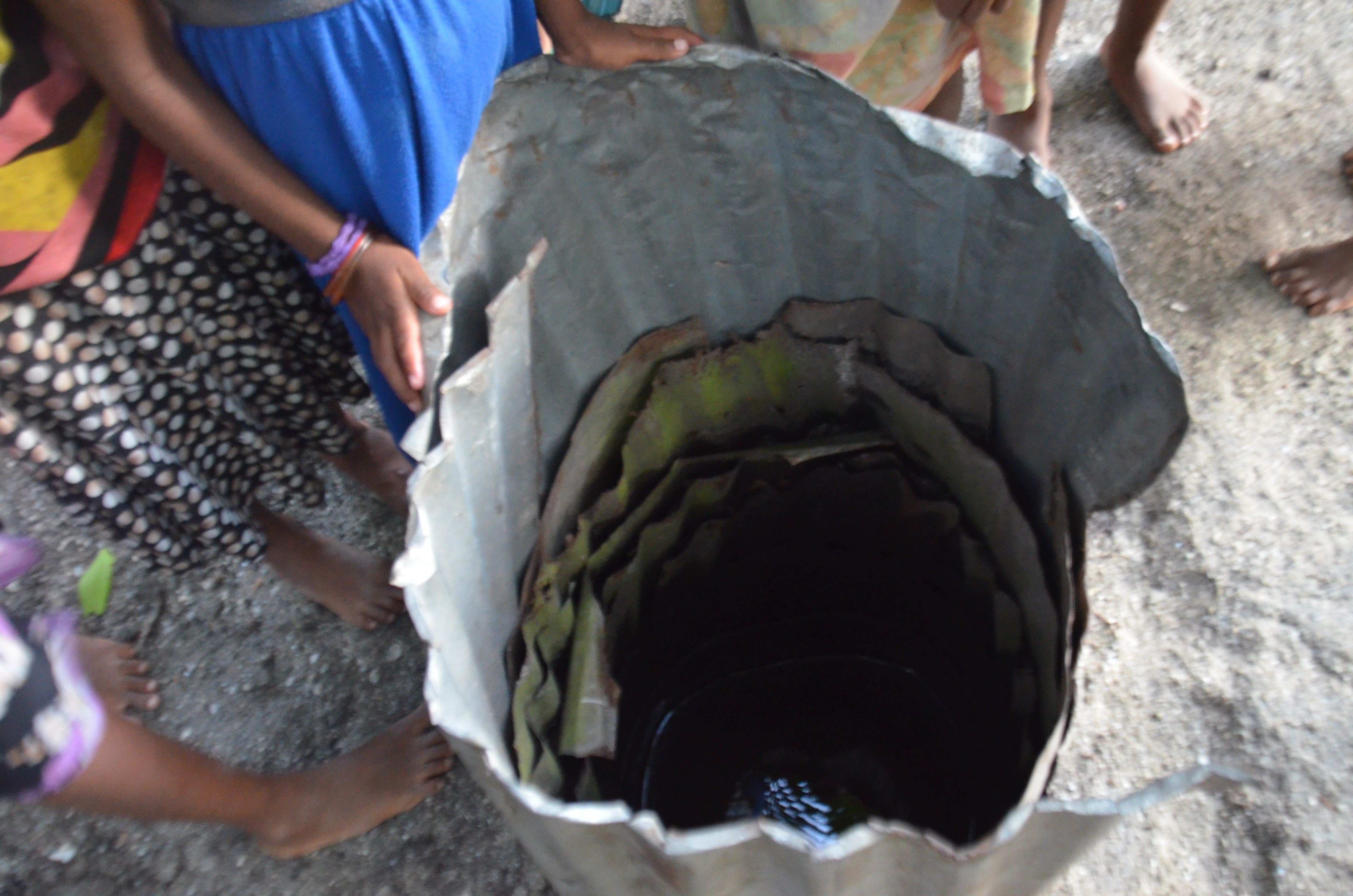
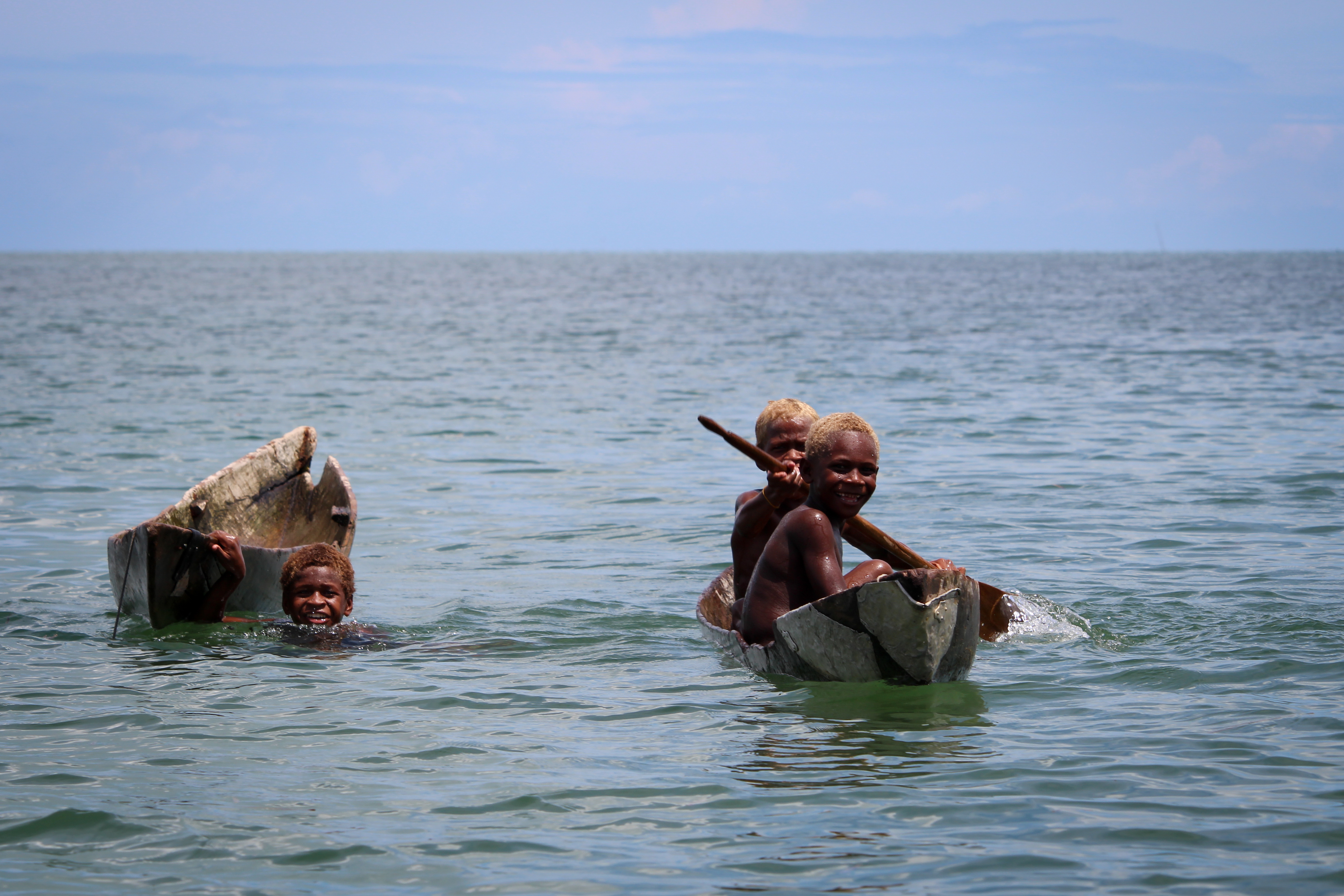
ProDocs
PIFs
Based on the LDCF resources requested and the scope of the climate change adaptation measures, the project will cover work in 6 pilot sites. On a national scale there are a number of benefits that this project will contribute to.
- More than 70% of the national population i.e. more than 360,000 people benefit from communal water systems and natural water sources and do not rely on government managed water supply systems. Many of these supply systems are dependent on water catchments and underground aquifers aquifers that are very sensitive to the hydrological cycle and its disturbances, most of which are related to climate change. Lessons from the project could be multiplied for the benefit of this population.
- Improvements to water supply will also result in more people having access to proper sanitation facilities, potentially reduce prevalence of disease and reduced costs to the people and to government’s social services
- UNDP estimates that water supply investment has an economic return of $4.4 to $1 while investment in sanitation has a return of $9.1 to $1. Some of the multiplier effects of investing in water and sanitation include; healthy workers, savings on medicines, bottled water not required, boost to agriculture and healthy tourists
- Increasing preparedness and enhancing resilience of the water sector to extreme events can potentially reduce the cost to government for disaster relief. Over the past few years flooding, king tides, excessive rainfall and storm surges have rendered rural locations and communities as disaster areas with the frequency of calls for disaster relief assistance from the national government reaching levels never before experienced in the country since it attained political independence in 1978
Outcome 1: Integrate water conservation and sustainable water resources management in all sectors and communities.
The outputs include: construction of village/community water tanks; construction of water reservoirs for institutional and residential areas; upgrading of existing reservoirs, protective structures/access roads; promote/build household rainwater harvesting; construction of strategic storage water reserve tank; engineered or “climate proofed” water reservoirs; develop and implement Water Use efficiency Plan; raise awareness for water conservation.
Outcome 2: Incorporate climate change adaptation strategies into the guidelines and criteria for design and construction of appropriate water infrastructure in vulnerable areas.
The outputs include: guidelines for development of water supply in rural areas developed; inventory of POPs and adequate storage and leakage prevention conducted; good practice guidance for pesticide storage and use, and application developed and used; drought and its effect on water distribution in rural areas assessed; rainwater harvesting technologies developed and used.
Outcome 3: Increased reliability and quality of water supply to all sectors and communities
The outputs include: capacity of water supply increased; water reticulation and distribution systems improved and where necessary constructed; arable land improved and rehabilitated; sustainable use of water on commercial agriculture land; build appropriate low-technology irrigation system for farmers; diversification food crops with a focus on high-yielding crop varieties promoted; promote water conservation and water use efficiency; prevent land-based pollution.
Outcome 4: Enhanced institutional and legal framework for water resources management
The outputs include: individual and institutional capacity for sustainable water management built and/or enhanced; water resources sector policy developed and implemented; water resources sector legislation developed and adopted; water sector plans and programmes developed and implemented.

Championed by the Government of the Solomon Islands through the Ministry of Mines, Energy and Rural Electrification (MMERE) Water Resources Division (WRD) in partnership with Ministry of Environment, Climate Change, Disaster Management and Meteorology (MECDM), and other line ministries, SIWSAP activities are designed to ensure access to safe and affordable drinking water and increase reliability and quality of water supplies in targeted areas. Longer-term project measures are working to integrate climate-resilient water management in policy and development frameworks; encourage investments in cost-effective and adaptive water management technologies; and improve governance and knowledge management for climate change adaptation in the water sector at the local and national levels.
Saving Lives, Protecting Agriculture Based Livelihoods in Malawi (M-Climes)
Climate change severely threatens sustainable development opportunities for Malawi. The country faces a number of climate-induced disasters including floods, droughts, stormy rains and strong winds. The intensity and frequency of climate-related hazards have been increasing in recent decades, due to climate change as well as other factors like population growth, urbanization and environmental degradation. Farmers and rural populations have been amongst the most affected. The impacts of climate hazards have severely disrupted food production, led to the displacement of communities, loss of life and assets, and caused an overall reduction of community resilience.
The “Saving Lives and Protecting Agriculture Based Livelihoods in Malawi: Scaling Up the Use of Modernized Climate Information and Early Warning Systems” (M-Climes) project will support the Government of Malawi to take important steps to save lives and enhance livelihoods at risk from climate-related disasters. The project focuses on Malawi’s technical, financial capacity, and access barriers related to weather and climate information (CI). These barriers will be addressed by investing in enhancing the hydro-meteorological capacity for early warnings (EWs) and forecasting; developing and disseminating tailored products for different actors (including smallholder farmers and fishers); and strengthening capacities of communities to respond to climate-related disasters.
PIFs
Climate change severely threats sustainable development opportunities for Malawi. The country faces a number of climate-induced disasters including floods, droughts, stormy rains, and strong winds. The intensity and frequency of climate-related hazards have been increasing in recent decades, due to climate change as well as other factors like population growth, urbanization and environmental degradation. Farmers and rural populations have been amongst the most affected. The impacts of climate hazards have severely disrupted food production, led to the displacement of communities, loss of life and assets, and caused an overall reduction of community resilience.
The “Saving Lives and Protecting Agriculture based Livelihoods in Malawi: Scaling Up the Use of Modernized Climate Information and Early Warning Systems” project will support the Government of Malawi to take important steps to save lives and enhance livelihoods at risk from climate-related disasters. The project focuses on Malawi’s technical, financial capacity, and access barriers related to weather and climate information (CI). These barriers will be addressed by investing in enhancing the hydro-meteorological capacity for early warnings (EWs) and forecasting; developing and disseminating tailored products for different actors (including smallholder farmers and fishers); and strengthening capacities of communities to respond to climate-related disasters.
The project is aligned with the Government of Malawi's national strategies such as the Malawi Growth and Development Strategy and the National Adaptation Programme of Action (NAPA). The design of the project followed extensive stakeholder consultations. This process allowed the project to gain the support of the relevant stakeholders including the community members from targeted districts, the civil society and local and international NGOs. The project is also supported by the pertinent government ministries and departments and local government with local offices in the targeted districts (DCCMS, DWR, MoAIWD).
Approximately 1.4M direct and 0.7M indirect beneficiaries (total 12% of the population) will gain access to critical weather information as a result of the project. It will reduce vulnerability of lives and livelihoods, particularly women’s, to impacts of climate change and extreme weather events. In addition, it will increase the resilience and enhance livelihoods of the most vulnerable people communities and regions.
Output 1: Expansion of networks that generate climate-related data to save lives and safeguard livelihoods from extreme climate events
- Activity 1.1: Expanding coverage of Meteorological and hydrological infrastructure through installation of AWS, hydrological monitoring stations, lightning detection systems, and lake-based buoys.
- Activity 1.2: Capacity-building of hydromet staff on operations & maintenance, data analysis, modeling, and forecasting.
Output 2: Development and dissemination of products and platforms for climate-related information/services for vulnerable communities and livelihoods
- Activity 2.1: Develop tailored weather/climate based agricultural advisories for 14 food insecure districts and disseminate through ICT/mobile, print, and radio channels
- Activity 2.2: Develop and disseminate tailored warnings and advisories for fishing communities of Mangochi, Salima, Nkhata Bay and Nkhotakhota around Lake Malawi
- Activity 2.3: Develop and deploy the flood and water resource modelling and decision support system to enhance coverage for disaster risk and water resource management
- Activity 2.4: Enablea demand-based model for climate information and services stimulating private sector engagement
- Activity 2.5: Knowledge sharing and management for development, dissemination and use of EW and CI to enhance resilience
Output 3: Strengthening communities capacities for use of EWS/CI in preparedness for response to climate related disasters
- Activity 3.1: Scale-up community-based EWS in flood-disaster prone areas of Karonga, Salima, Dedza, Nkhotakota, Nkhata Bay, Rumphi, Phalombe and Zomba
- Activity 3.2: Capacity development of national, district and community level actors on disaster and climate risk management
Project-level monitoring and evaluation will be undertaken in compliance with the UNDP POPP and the UNDP Evaluation Policy. The Project Manager that will be in charge of running the project on behalf of Department of Disaster Management Affairs (DoDMA) will be responsible for day-to-day project monitoring. S/he will develop annual work plans to ensure the efficient implementation of the project.
The UNDP Country Office will conduct, within other monitoring activities, annual supervision missions. The UNDP Country Office will be responsible for complying with UNDP project-level M&E requirements. Additional M&E, implementation quality assurance, and troubleshooting support will be provided by the UNDP Regional Technical Advisor as needed.
A Project Implementation Report (PIR) will be prepared for each year of project implementation. The Project Manager, the UNDP Country Office, and the UNDP Regional Technical Advisor will provide objective input to the annual PIR. The Project Manager will ensure that the indicators included in the project results framework are monitored annually well in advance of the PIR submission deadline and will objectively report progress in the Development Objective tab of the PIR. The annual PIR will be shared with the Project Board and other stakeholders.
An independent mid-term review (MTR) process will be undertaken and the findings and responses outlined in the management response will be incorporated as recommendations for enhanced implementation during the final half of the project’s duration.
An independent terminal evaluation (TE) will take place no later than three months prior to operational closure of the project. UNDP Country Office will include the planned project terminal evaluation in the UNDP Country Office evaluation plan, and will upload the final terminal evaluation report in English and the management response to the public UNDP Evaluation Resource Centre (ERC) (www.erc.undp.org).The MTR and TE will be carried out by an independent evaluator. The evaluation report prepared by the independent evaluator is then quality assessed and rated by the UNDP Independent Evaluation Office.
Protecting Malawi with climate information and early warning systems, published by the Green Climate Fund, December 2019
Strengthening climate information in food insecure districts in Malawi
Henry Msiska is a 49-year-old Lead Farmer from Mziliwanda village in Nchenachena in the northern district of Rumphi. To Msiska, delayed onset of rains is undoubtedly the biggest challenge in his agri-business. “I remember some years back, the rainy season used to start in November and last in April or May. But nowadays, the rain would start in December and end even before March,” observes Msiska. Due to this unpredictability of the present-day rainfall patterns his crops have been subject to new pests and diseases, a development that has drastically been reducing his farm yields. Despite growing more climate-resilient crops, it has still been very difficult for him to put more focus on them (crops) due to the changes in the climatic conditions. Msiska is not alone in this predicament as this phenomenon affects thousands of other farmers across Malawi. However, with the use of tailored-weather information and advisories, that he and other community members are expected to be receiving through mobile phones, print and radio channels, under the M-CLIMES Project, such challenges are expected to be a thing of the past. The M-CLIMES Project, which is being implemented with funding from the Green Climate Fund (GCF) aims at increasing the farmers’ adaptive capacity and their decision-making through timely provision of climate-related risks information.
UN support enhances delivery of improved weather services in Malawi
The Department of Climate Change and Meteorological Services has said UN capacity building support to the department has improved their capacity to generate, analyse and disseminate weather information in the country. The department’s deputy director Rodrick Walusa said this on 27th July 2018 when the UN Resident Coordinator, Maria Jose Torres, visited their offices in Blantyre to appreciate impact of UN support to the department. “UNDP has provided us with support to improve our infrastructure for handling weather information,” said Walusa. “We have transformed many of our weather stations into automated ones. With UNDP support, 10 automated weather stations have been fully automated and additional 33 automated weather stations are being procured by UNDP for installation in some of the remaining sites across the country.”
Farmers and fishers benefiting from digitized weather data in Malawi
The exercise which is set to run for 17 days is being conducted in Zomba District under the Green Climate Fund (GCF) funded ‘Saving lives and Protecting Agriculture-based Livelihoods in Malawi: Scaling up the use of Modernized Climate information and Early Warning Systems (M-CLIMES), being implemented by the Department of Disaster Management Affairs (Dodma).
The DCCMS Chief Meteorologist, Mr. Fred Kossam, said that the digitization of climate data is expected to bring many benefits to Malawi and will provide a fundamental building block for climate change adaptation and disaster management in the country by improving the accuracy of seasonal rainfall forecast.
The positives of preparing for disaster
Knowledge is power. In terms of climate change, this translates into using a growing understanding of how rising global temperatures lead to localised weather disasters. This improved knowledge can help reduce the physical and social devastation of climate change by providing early warning...
While the landlocked nation of Malawi is highly susceptible to droughts, it also provides an example of how flooding can pose a problem for a number of African countries – even those located far from coastlines. Lake Malawi, one of the largest lakes in the world, is a central geographical and economic feature of the country. A GCF project in Malawi being implemented by the United Nations Development Programme (UNDP), a GCF Accredited Entity, is installing automatic weather stations and lake-based weather buoys to increase the capacity to identify and forecast flood risks.
A major component of this USD 16.3 million early warning project is ensuring that climate information is transmitted to vulnerable farming and fishing communities around the lake. The sharing of climate information to the right people is a key part of all effective early warning systems. In the case of the Malawi project, this will include making sure affected communities know what to do with enhanced weather information. The capacity of local communities, district councils, and national agencies to respond to emergencies will be strengthened through training and improved emergency services.
Malawi's farmers watch climate change
Malawi: Illiteracy Levels Affecting Meteorological Services
Department of Climate Change and Meteorological Services has attributed its information communication dissemination challenge to high illiteracy levels in the country, saying people fail to instantly understand the information they present at once. Amos Ntonya, a Meteorologist in the Department of Climate Change and Meteorological Services said this on Tuesday during a meeting organised to sensitise Nkhotakota District Executive Committee on 'Saving Lives and Protecting Agriculture-based Livelihoods in Malawi: Scaling up the Use of Modernised Climate Information and Early Warning Systems (M-CLIMES)' Project.
Maravi Post
The Department of Disaster Management Affairs (DODMA) in conjunction with the United Nations Development Programme (UNDP) will embark on scaling up the use of modernised climate information and early warning systems (M-CLIMES) Project aimed at reducing vulnerability of communities to climate change. Briefing the District Executive members (DEC) in Mchinji on Friday, Project coordinator of M-CLIMES DODMA, Rabi Narayan Gaudo, said the six year project (2017-2023) will target two million beneficiaries including farmers, fishermen and flood-prone communities. “The Information Systems Programme will help reduce vulnerability to climate change impacts on lives and livelihoods, particularly of women, from extreme weather events and climate change, and strengthen community capacities in preparedness for response to climate related disasters,” he said. Gaudo said through the project, automated weather stations will be installed in 19 districts, automated rain gauges will be installed for enhanced community early warnings, and all 21 districts will benefit from improved accurate and reliable climate weather forecasts for agriculture.
New climate project to support 3 million Malawians
4 October 2017, Lilongwe
The Government of Malawi, through the Department of Disaster Management Affairs (DoDMA) and with support from the United Nations Development Programme (UNDP), has officially launch a new project to scale up the use of modernized early warning systems and climate information across 21 of the country’s 28 districts. The project called Saving Lives and Protecting Agriculture-based Livelihoods in Malawi: Scaling Up the Use of Modernized Climate Information and Early Warning Systems (M-CLIMES), is co-financed by the Green Climate Fund (GCF), a global fund created to support efforts of developing countries to respond to the challenge of climate change. The M-CLIMES project will reach an estimated three million people in the country with lifesaving early warnings, and improve the monitoring, packaging and distribution of valuable climate information that can save lives, protect livelihoods, and inform decision-making on development plans.
Scaling Up the Use of Modernized Climate Information and Early Warning Systems in Malawi
New UNDP-Supported Project Funded by the GCF Works to Reduce Vulnerability to Climate Change Impacts
By Srilata Kammila
A recently approved project supported by the UNDP and funded through the Green Climate Fund is providing new opportunities to scale up the use of climate information and early warnings in Malawi. The innovative $11 million project focuses on building weather- and climate-related services and has the potential of reaching approximately 2 million people, providing farmers, fishers and communities impacted by a changing climate with the information they need to protect lives and build livelihoods. This includes investing in the use of climate information for planning agricultural and on-farm activities, providing warnings of severe weather for fishers on Lake Malawi, improving flood forecasting and monitoring, and fostering information exchanges through mobile platforms....
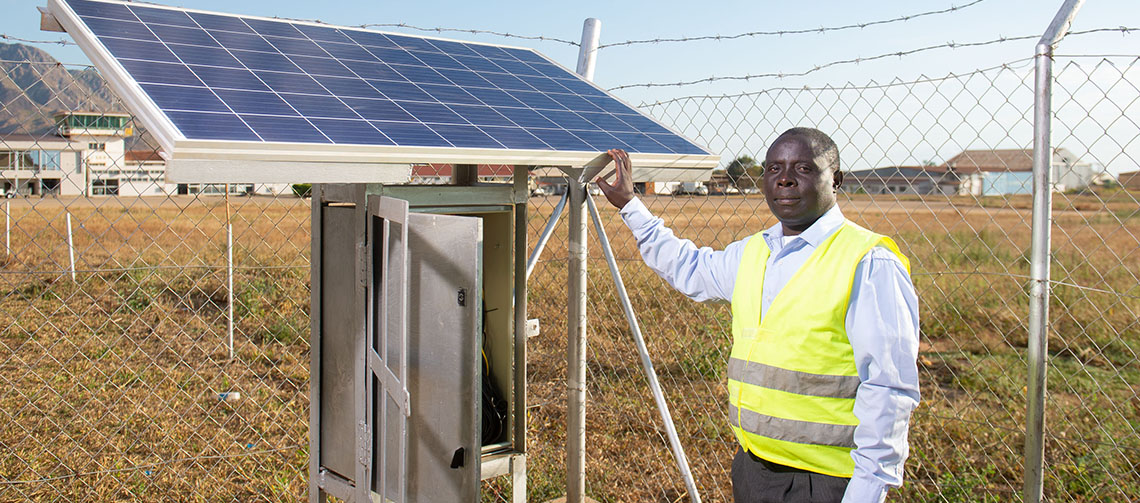
Output 1: Expansion of networks that generate climate-related data to save lives and safeguard livelihoods from extreme climate events
Output 2: Development and dissemination of products and platforms for climate-related information/services for vulnerable communities and livelihoods
Output 3: Strengthening communities capacities for use of EWS/CI in preparedness for response to climate related disasters
Mountain Ecosystem-based Adaptation in Nepal
The Harpan Watershed, Panchase in Nepal lies in the mid-hills of Nepal and consists of valleys, hills and the high mountains of the Himalayas. The economy of the Panchase is largely subsistence, based on crop production and livestock. There is high climatic variation due to changes in altitude and an average rainfall of 3, 355mm. The selected project site, the Harpan watershed, is about 15 km² with sub-tropical to temperate climate. There are about 900 households with a population of 4,598.
Through the global Ecosystems-based Adaptation (EbA) in Mountains Programme, UNDP, UNEP and IUCN, with funding from the German Government (BMUB), used sustainable management, conservation and restoration of ecosystems, as part of an overall EbA adaptation strategy, to reduce the vulnerability and enhance the resilience of select fragile mountain ecosystems and their local communities to climate change impacts.
For more information visit the Global Ecosystems Based Adaptation in Mountains Programme profile, or the EbA Flagship.
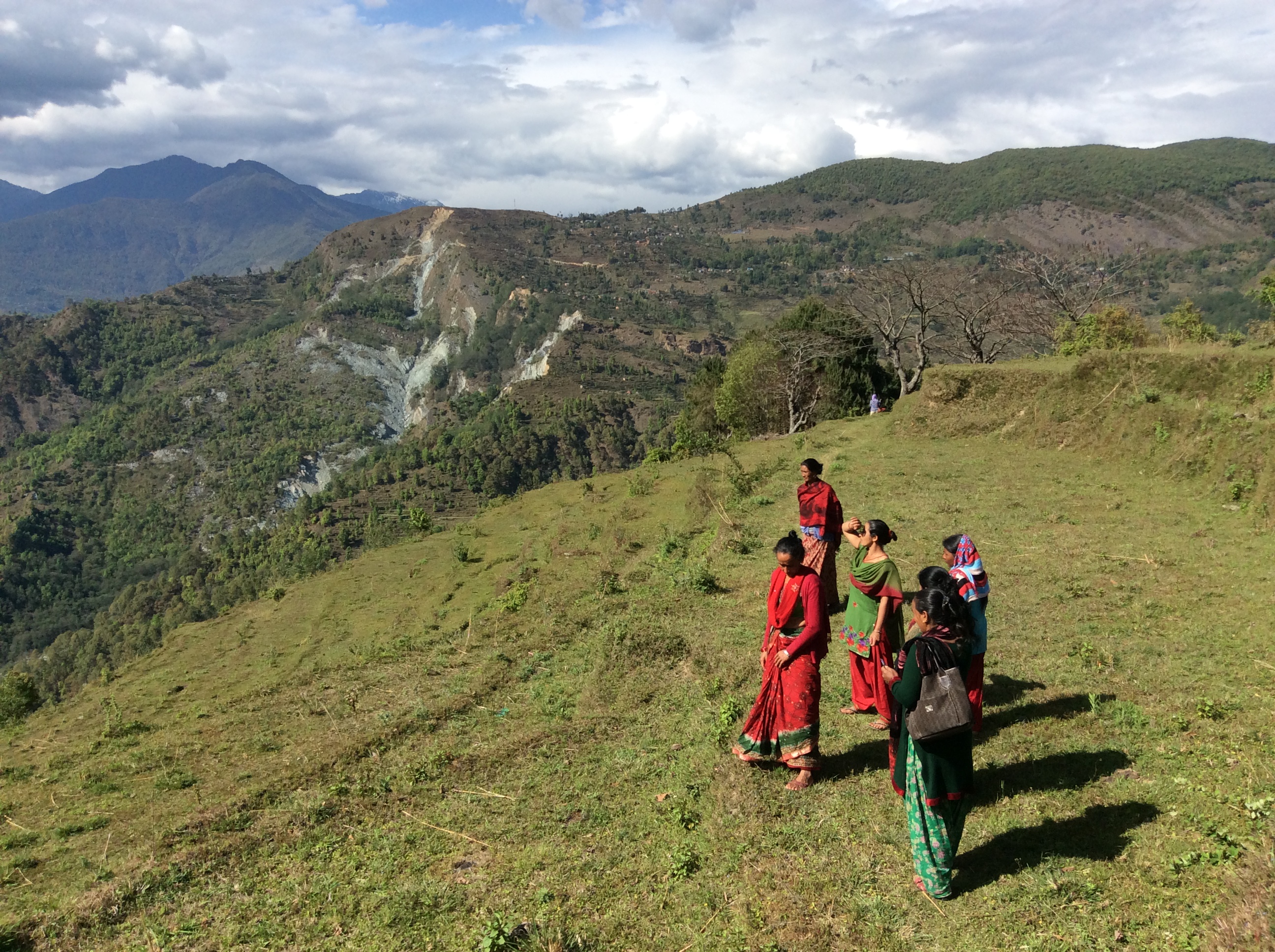

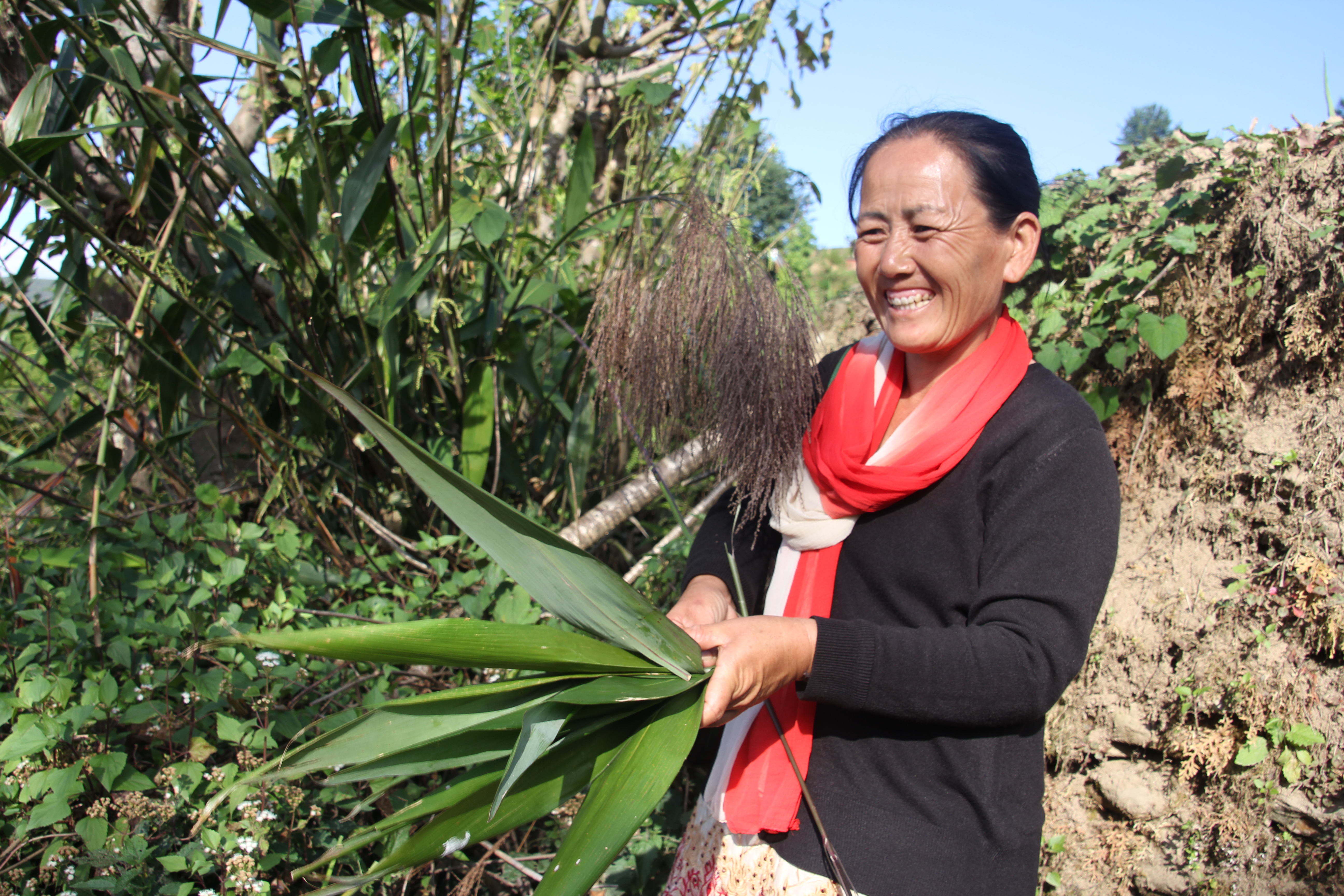
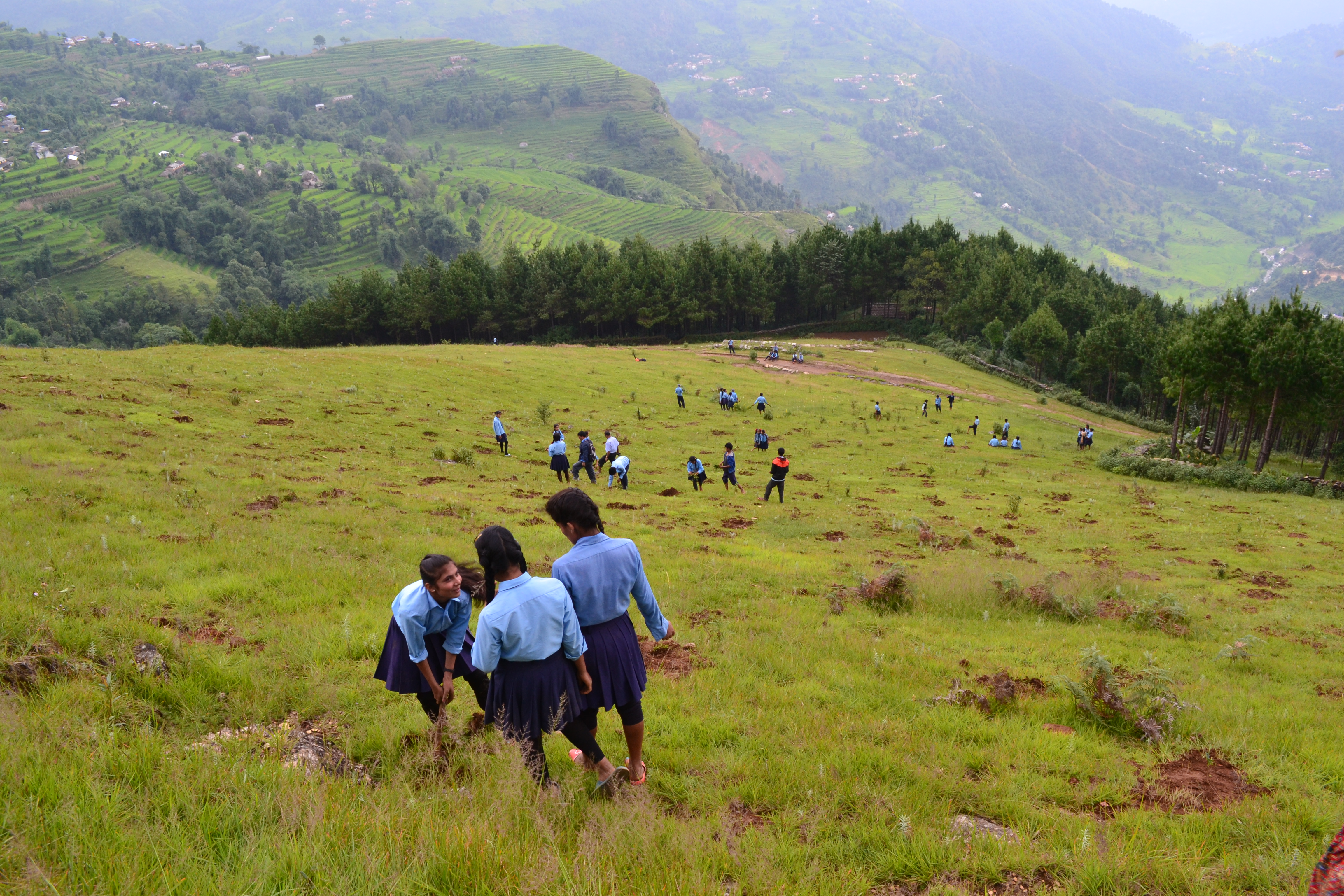
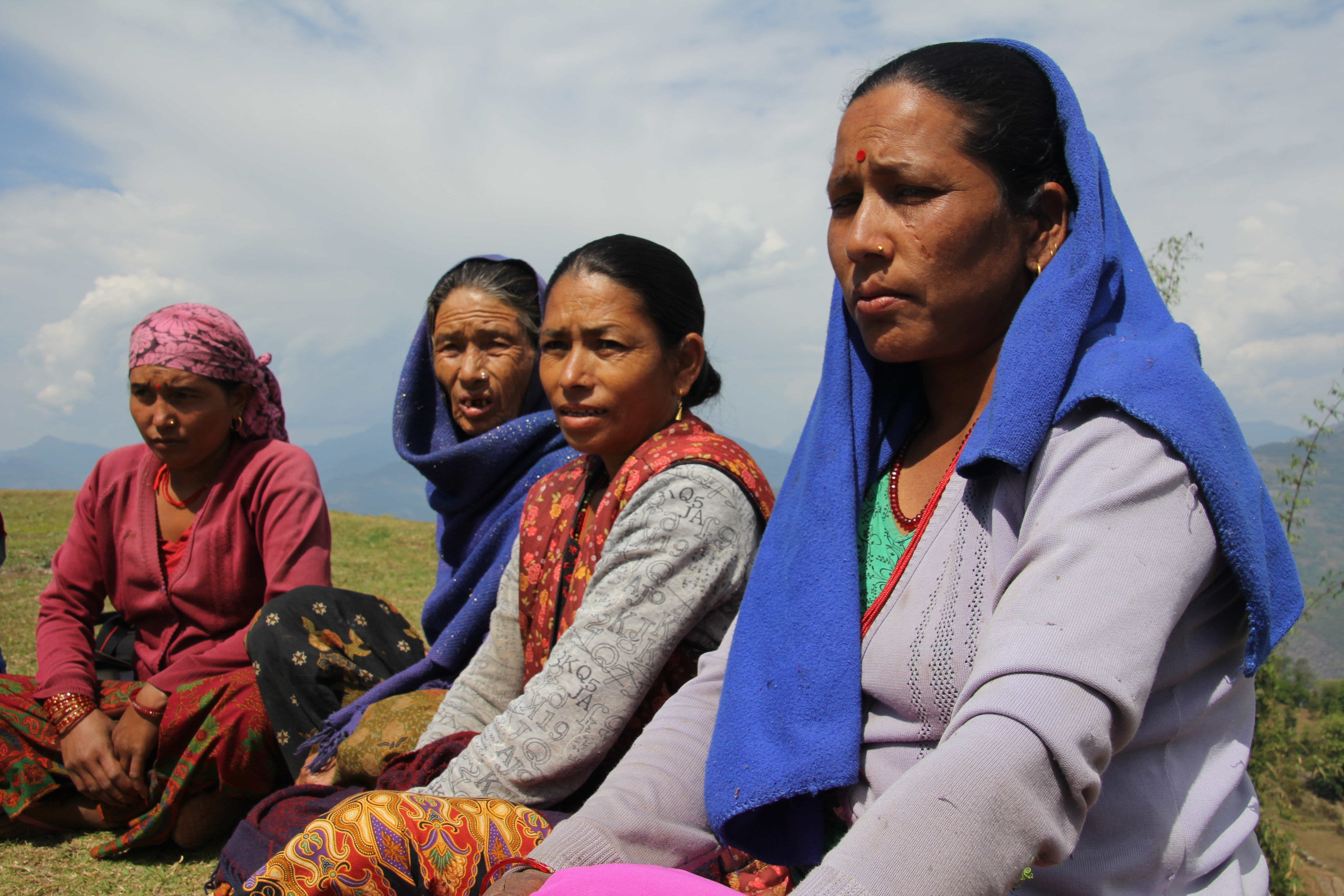
Assessments and Background Documents
Mt EbA Nepal Vulnerability & Impact Assessment of Panchase Region (2015)
Min of Forests and Soil Cons & UNDP Nepal (2014) Mt EbA Baseline & Socio-Econ Survey
Relevant Peer-Reviewed Articles
EbA planning in the Panchase Mountain Ecological Region (2015)
Brochures, Posters, Communications Products
BROCHURE NEPAL Mt EbA Programme 2 (Min of Forests and Soil Cons & UNDP Nepal)
BROCHURE Ecosystem Services (Min of Forests and Soil Cons & UNDP Nepal Mt EbA)
BROCHURE NEPAL Mt EbA Programme (Min of Forests and Soil Cons & UNDP Nepal)
BROCHURE EbA Concept (Min of Forests and Soil Cons & UNDP Nepal Mt EbA)
Project Brief / Fact Sheet
FACT SHEET - Nepal Mt EbA Programme (Min of Forests and Soil Cons & UNDP Nepal)
Case Study
Min of Forests and Soil Cons & UNDP Nepal (2013) - Timur Value Chain Study
Min of Forests and Soil Cons & UNDP Nepal (2013) - Orchid Value Chain Study
Min of Forests and Soil Cons & UNDP Nepal (2013) - Kurilo Value Chain Study
Min of Forests and Soil Cons & UNDP Nepal (2013) - Chiraito Value Chain Study
Min of Forests and Soil Cons & UNDP Nepal (2013) - Allo Value Chain Study
ProDocs
The Nepal Pilot Project of the global Ecosystem-based Adaptation in Mountains Programme aims to enhance capacity of local communities, demonstrate EbA measures for continued provision of ecosystem services, and support in strengthening the institutional capacity of key national Nepalese actors to build and better integrate ecosystem resilience options in national, sub-national and local level plans.
It is working to specifically support 4 outcomes:
- Development of methodologies and tools for EbA decision-making in mountain ecosystems;
- Application of EbA tools and methodologies at the ecosystem level;
- Implementation of EbA pilot initiatives at the ecosystem level; and
- Development of a business case for EbA at the national level.
In Nepal, the Project is implemented by the Department of Forests (DoF) under the Ministry of Forests and Soil Conservation (MoFSC) and is coordinated by the Ministry of Science, Technology and Environment (MoSTE). Similarly, there are three implementing agencies: UNEP, UNDP and IUCN. EbA initiatives are concentrated in 17 VDCs (Village Development Committees) of the ‘Panchase’ region and covers three districts – Kaski, Syangja and Parbat.
Some key accomplishments for the project include:
- The project has prioritized 3 important sub-watersheds – Rati, Saradi and Harpan - and focused on different interventions such as ecosystem restoration, water conservation, land rehabilitation, livelihood diversification and capacity enhancement of government agencies and local communities.
- Practices, like water source conservation and construction of conservation ponds, have been initiated in the pilot sites to address water scarcity issues, since the water sector is significantly affected by climate change in Nepal. These initiatives have helped reduce drudgery in fetching water required for dominant rural livelihood practices, i.e. subsistence agriculture and livestock rearing.
- Out-migration in Panchase has resulted in an increasing amount of abandoned and barren land. The Project has hence carried out plantation initiatives of endemic multi–use species to protect these lands from further degradation and also complement the needs of rural people for fuel wood and fodder. Additionally, the Project has supported nursery establishment in the region to provide easy access to seedlings species for plantations by the locals. Likewise, land degradation resulting from unplanned rural road construction has been addressed by roadside greenery promotion and roadside rehabilitation, using engineered structures such as ‘gabion cages’ that are supplemented by plantations. Similarly, several landslide and gully control initiatives have also been carried out in the project pilot sites.
- Rangeland management has been done by building compound walls to halt over-grazing activities of the livestock and protect the grassland ecosystem from further degradation. The Project has also distributed fodder species to reduce the pressure on the open degraded land.
- Several river bank conservation initiatives with application of grey-green measures, i.e. engineered structures coupled with bamboo plantation, have been carried out to protect agricultural lands in the river banks to reduce deposition of sediment downstream.
- The Harpan Sub-watershed is an important feeder to the nationally important Phewa Lake, which today suffers from massive deposition of silt. The Project has, therefore, carried out a comprehensive study on the siltation process of Harpan Khola and subsequently proposed construction of ecosystem-based siltation control techniques and a siltation dam in the Harpan River.
- The EbA concept has now been mainstreamed in Bachelors of Science (BSc) degree syllabus of the Tribhuvan University, Central Department of Environmental Science (CDES). Similarly, to reduce the research gap, EbA has provided research grants to the students of Tribhuvan University to undertake research work in the EbA site to investigate the effectiveness of EbA options.
- The Project broadcasted radio programs named ‘Panchase ko Serofero’ through Radio barahi-99.2, Radio saligram-100.6 and Syangja FM-89.6, respectively, from Kaski, Parbat and Syangja to increase local level awareness on ecosystems and EbA.
Some policy-related accomplishments include:
- Led by UNDP, the Nepal project has been engaged in the process of establishing the newly formed High-Level Technical Committee on EbA to be led by the Ministry of Forests and Soil Conservation. The main role of the Committee is to coordinate and mainstream ecosystem-based approaches to climate change adaptation into different sectoral plans and programmes. The Committee includes representatives from various Ministries, such as National Planning Commission, Ministry of Forests and Soil Conservation, Ministry of Science, Technology and the Environment, Ministry of Agriculture and Ministry of Federal Affairs and Local Development. The first meeting of the Committee was scheduled for last week of September.
- The results of the Cost-benefit analysis carried out by the Nepal project, led by UNDP, will be presented in a high-level event, organized jointly with the High-level Technical Committee, in October.
- The new Forest Policy (2015) has climate change as one of seven thematic areas and includes EbA as one of the approaches put forward for adaptation. The project, led by UNDP, is involved in a working group developing a 5-yr action plan for the delivery of the climate change area of this Policy in all 75 Districts of Nepal. The project is providing direct technical input into how this key national policy will be implemented in practice with regards to climate change and making the case for integrating EbA measures into its delivery.
- The Nepal project, led by UNDP, has provided technical and financial support to produce draft Guidelines on Protected Forests, which provide regulations and directives on managing Protected Forests and are in the process of being endorsed by Government. The proposed Guidelines incorporate EbA and provide the opportunity for integrating EbA into the national Protection Forest management plans and programmes.
Mountain Ecosystem-based Adaptation in Uganda
Mount Elgon landscape in Uganda is the seventh highest mountain in Africa, a major catchment area and straddles the border between Kenya and Uganda. The climate is cool with a mean annual rainfall of 1,270 mm. The population of Mount Elgon is almost entirely rural and dependent on subsistence agriculture, with approximately 564,000 people living in the 4 districts which make up the project site. The region is home to Mt Elgon National Park and is of great conservation value, but high population density means that agriculture is spreading rapidly.
Through the global Ecosystems-based Adaptation (EbA) in Mountains Programme, UNDP, UNEP and IUCN, with funding from the German Government (BMUB), are using sustainable management, conservation and restoration of ecosystems, as part of an overall EbA adaptation strategy, to reduce the vulnerability and enhance the resilience of select fragile mountain ecosystems and their local communities to climate change impacts. The promoted EbA measures carefully take into account anticipated climate change impacts trends to ensure a forward-looking process.
For more information visit the Global Ecosystems Based Adaptation in Mountains Programme profile, or the EbA Flagship website.

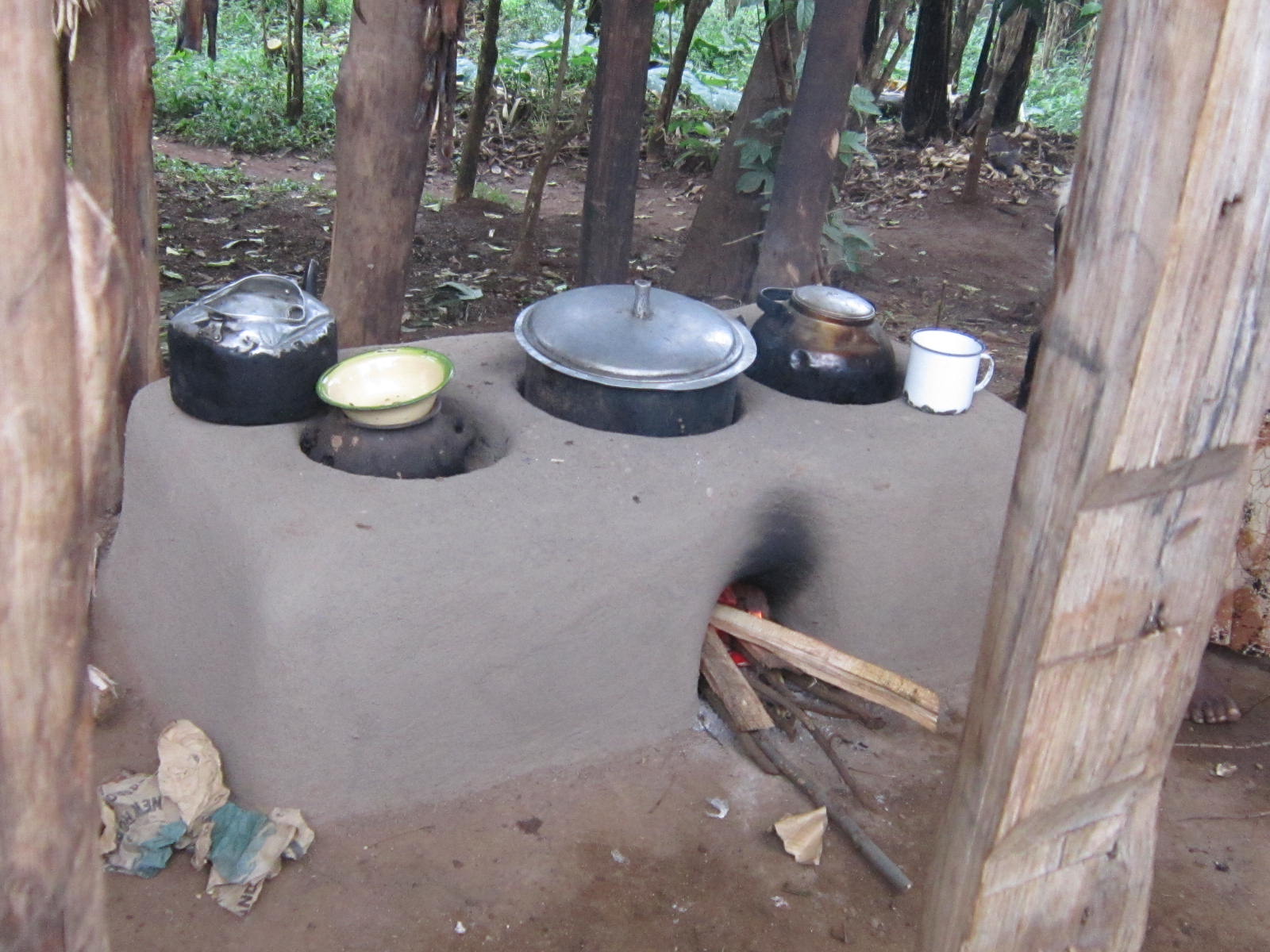
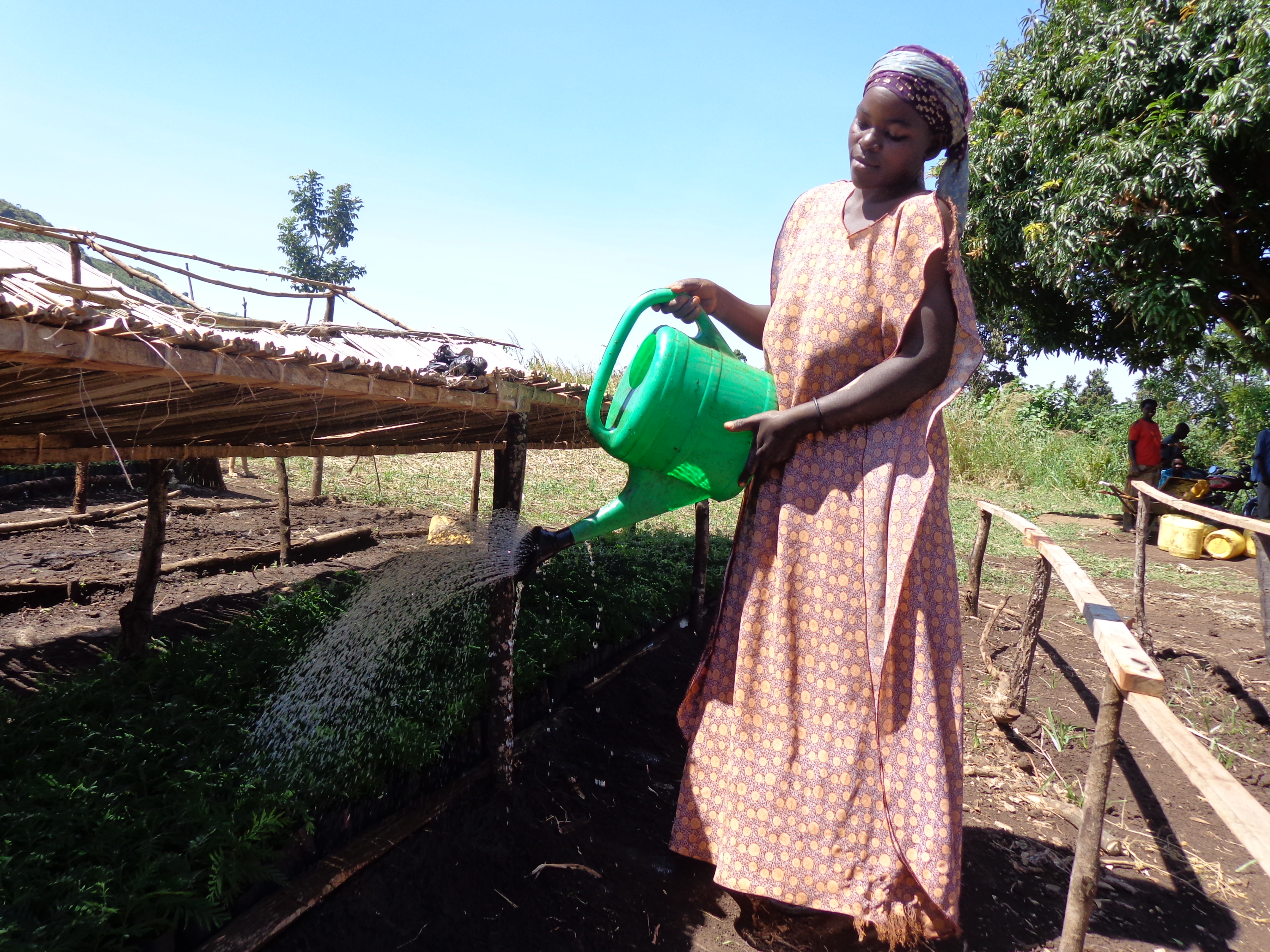
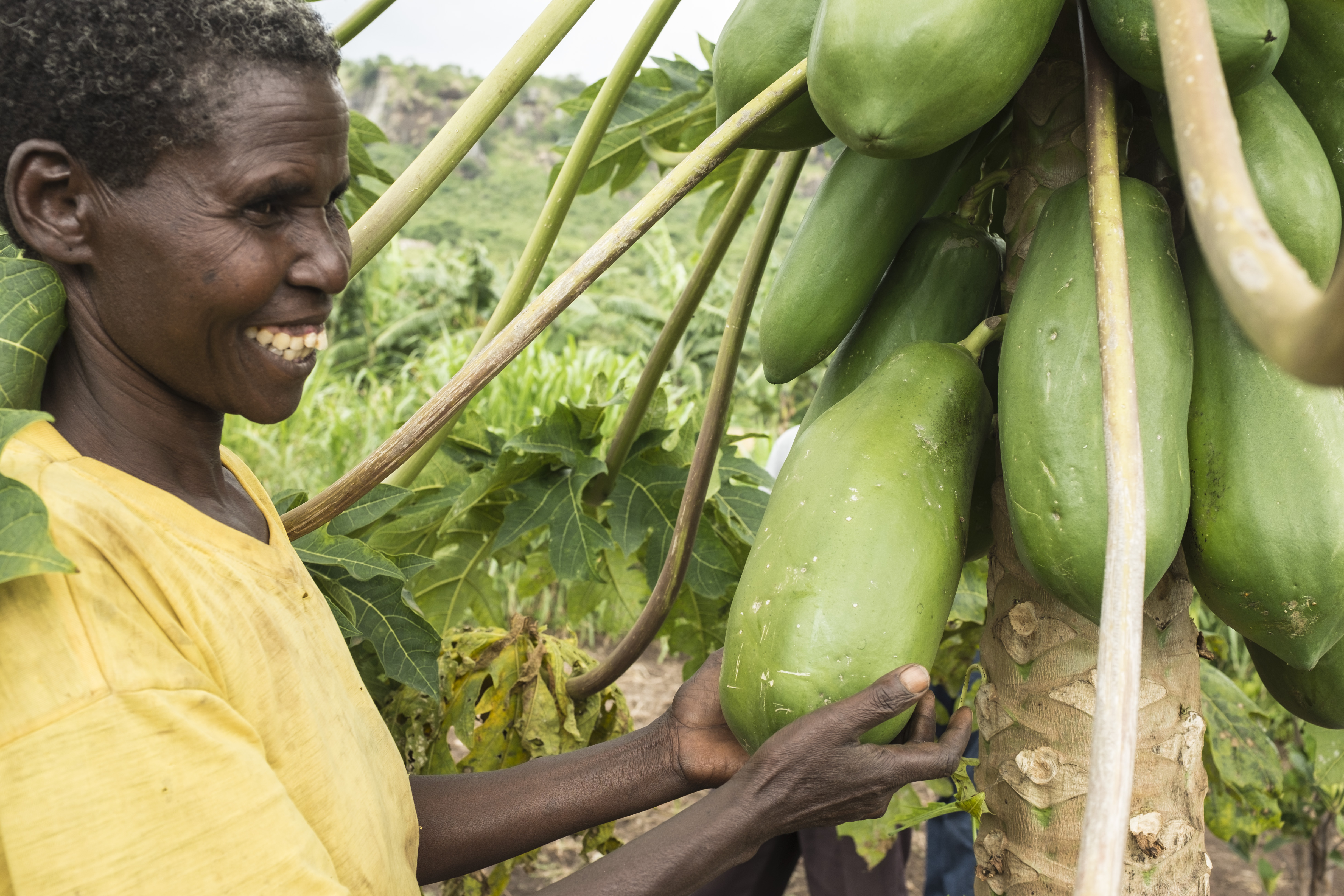
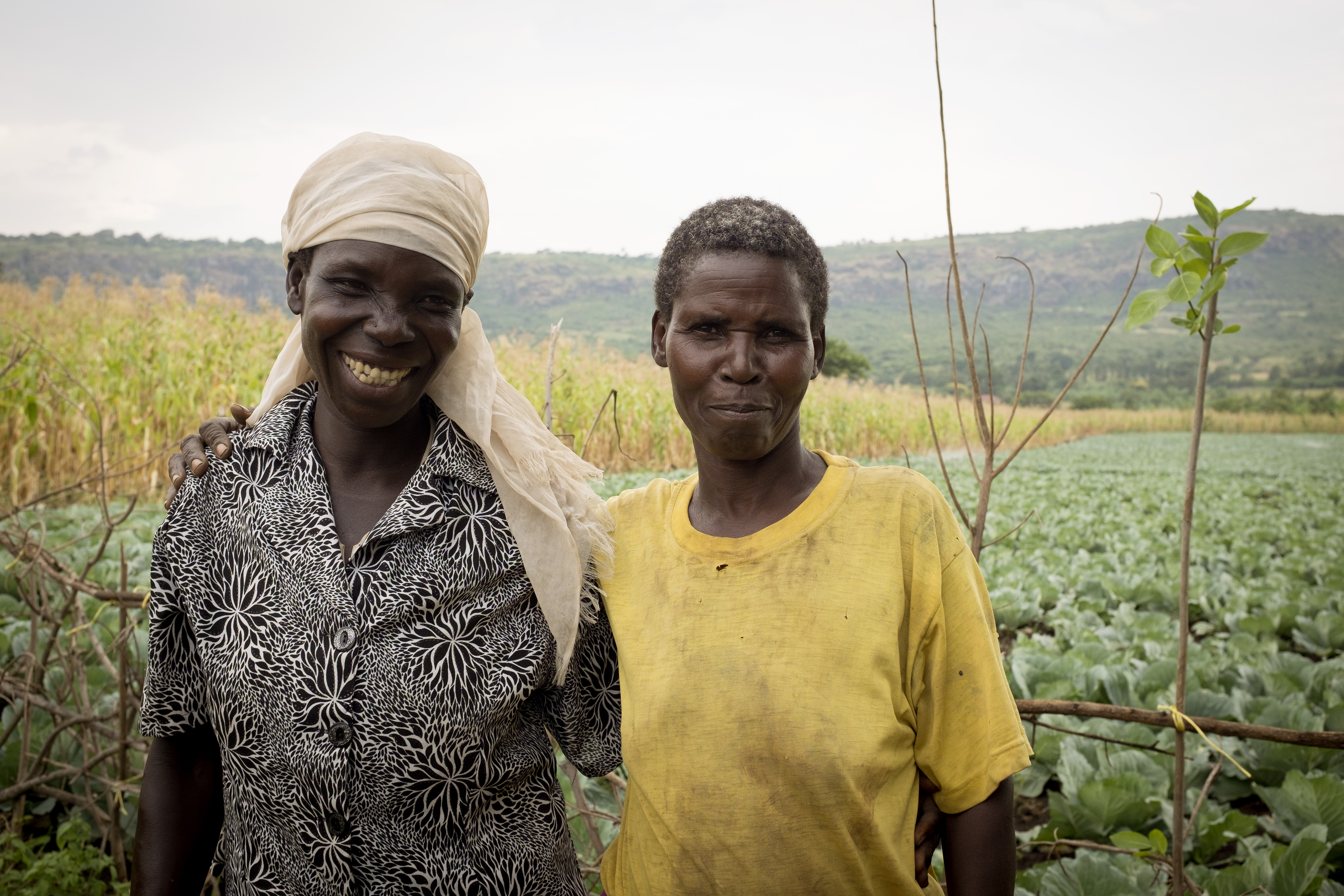
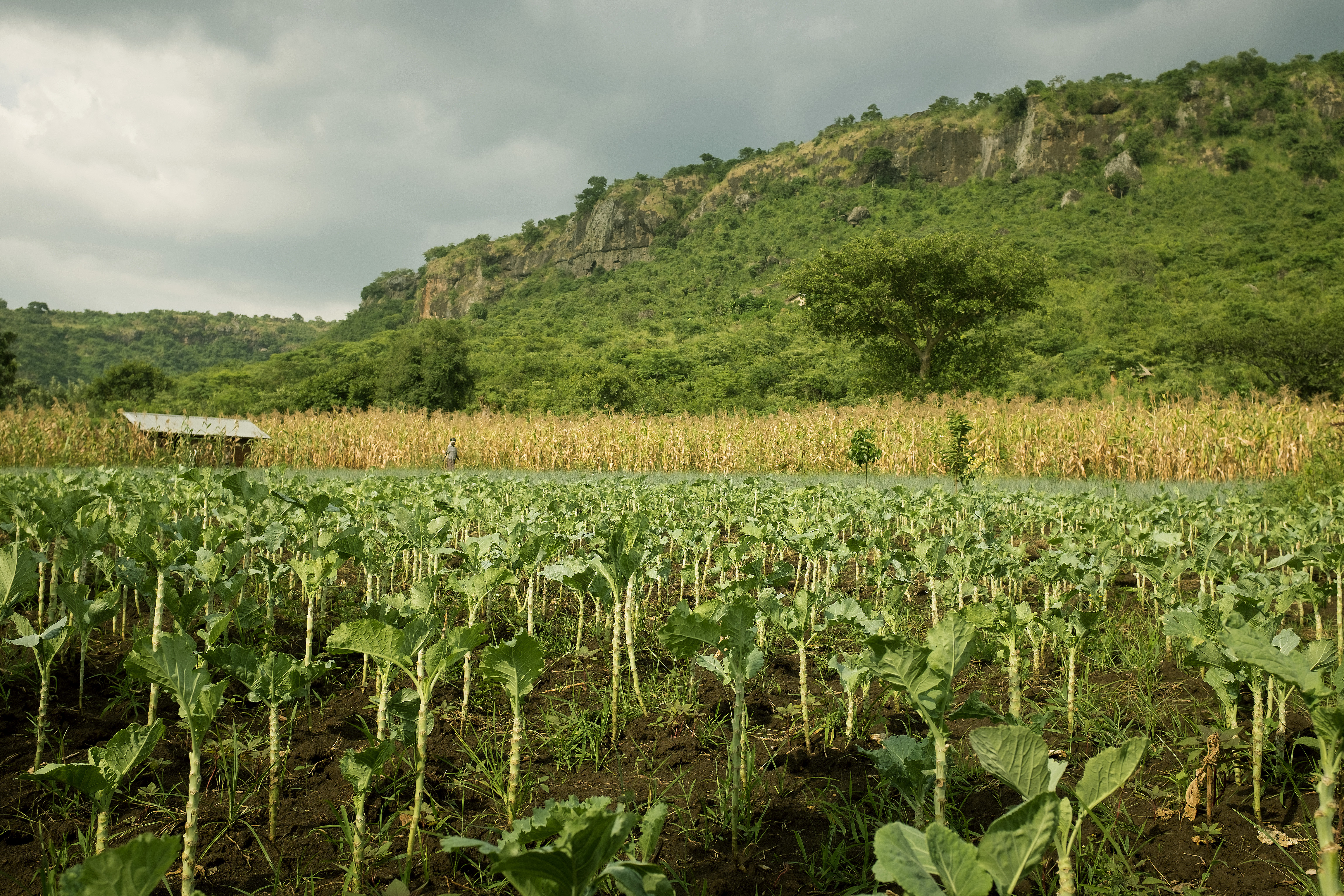
Assessments and Background Documents
UNDP Uganda+UNEP+UNEP-WCMC (2013) Uganda VIA Report POPULAR VS
Min of Water and Envir & UNDP (2012) VIA Capacity Assessment for EbA in Mt Elgon
Min of Water and Envir & UNDP (2012) Baseline info for EbA in Mt Elgon Ecosystem Project Strategy
Brochures, Posters, Communications Products
Min of Water and Envir & UNDP (2014) BROCHURE Uganda Mt EbA pilot project
Communications Products
Min of Water and Envir & UNDP (2014) Uganda Mt EbA Communications Strategy
Training & Tools
Min of Water and Envir & UNDP (2015) Training Manual - Mainstreaming EbA into policy & financing frameworks
Min of Water and Envir & UNDP (2015) Manual for implementing EbA in Mt Elgon Ecosystem of Uganda
Reports and Publications by country teams
Min of Water and Envir & UNDP (2015) Public Policy & Financing Framework for EbA in Mt Elgon POPULAR VS
Min of Water and Envir & UNDP (2015) Public Policy & Financing Framework for EbA in Mt Elgon
UNDP Uganda: Ecosystem Based Adaptation in Uganda
This documentary highlights the need for mainstreaming ecosystem-based adaptation strategies into national policies to ensure that actions against climate change is planned for. It puts a strong emphasis on the importance of Government funding such measures into the future through core budgets.
The objective of this Uganda pilot project under the global Mountain EbA Programme is to reduce the vulnerability of Uganda to climate change impacts through piloting Ecosystem-based Adaptation options with particular emphasis on mountain ecosystems in the Mt Elgon region.
It is working to specifically support 4 outputs:
- The development of decision-making tools for ecosystem-based adaptation for assessing ecosystem resilience,
- Field testing the tools in the pilot countries,
- Making investments in and building capacity for EbA at select demonstration sites, and
- Establishing the economic benefits and financial costs of EbA, to guide national policies.
The project is implemented by the Ministry of Water and Environment (MWE) focusing on the Districts of Sironko and Bulambuli (implementation supported by UNDP) and Kapchorwa and Kween (Implementation supported by IUCN).
Some key accomplishments for the project include:
- A Vulnerability Impact Assessment (VIA) has been carried out to determine which EbA interventions can be used to support the communities in the selected project area.
- About 600 households within the 4 districts (Kween, Kapchorwa, Sironko & Bulambuli) have received training in climate-smart interventions and are implementing them on their land. Local platforms including local radios are being used for knowledge sharing.
- Different techniques in support of climate-resilient agriculture have been encouraged, including mulching, use of organic fertilizer, improved water retention through roadside drainage bunds, run off retention drains, diversion bands in crop gardens; and gravity flow irrigation (benefitting over 1,000 formerly water-stressed community members in 3 villages in Sanzara Parish).
- Practices like soil and water conservation structures, have also been promoted, including contour trenches, contour ridges, retention or check dams, infiltration ditches and contour bands; tree planting for stabilization of soil and water conservation, with appropriate species together with contour grass strips; and the management and protection of existing forests and trees on the farm.
- At the local governance level, structures for natural resource governance have been strengthened, including a schematic framework for managing a new adaptation fund in all the three catchments, including the communities and district technical staff.
- The ECOTRUST PES facility being piloted by the project was officially launched in March 2015 by the Minister of Water and Environment, Hon. Ephraim Kamuntu. The Minister emphasized the contribution of the fund to many of the investment priorities identified in the National Development Plan of Uganda such as skills development, water and sanitation; and facilitating availability and access to critical production inputs especially in agriculture.
- With support from the project, the Ministry of Water and Environment is developing guidelines on how to integrate EbA into national and district level planning and policies. This is a participatory process that has been done through training workshops and provision of tools. A specific training package on implementing EbA in Mt Elgon has also been developed, which provides step to step guidance on planning and implementing EbA aimed as a tool at supporting extension services
- The cost-benefit analysis results and data generated will be used to advocate the case for EbA to government during a meeting of the Top Policy Committee of the Ministry of Water & Environment. This will then be followed up at during the Joint Sector Water & Environment Review (week of 5th Oct) being held by the National Climate Change Policy Committee and the National Environment & Natural Resources Sector Working Group.
 Community Revolving Fund promotes rural enterprise development and environmental protection
Community Revolving Fund promotes rural enterprise development and environmental protection
 Beekeeping saving the environment in Sironko
Beekeeping saving the environment in Sironko
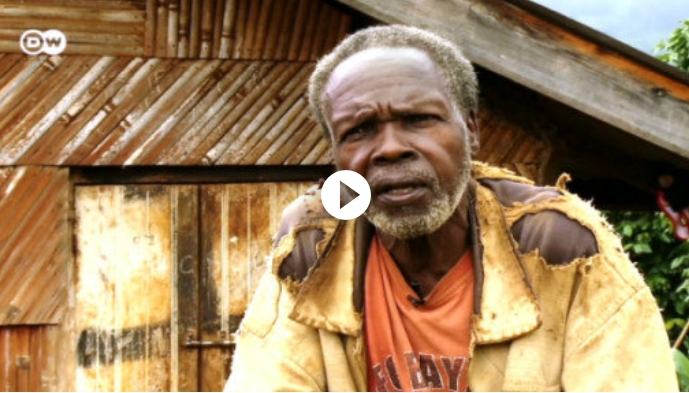 Global Ideas: Uganda – Protecting an Ecosystem
Global Ideas: Uganda – Protecting an Ecosystem
 Our Stories - An environmentally friendly building technology saving trees in Sironko district
Our Stories - An environmentally friendly building technology saving trees in Sironko district
 Articles - Uganda’s first Payment for Environmental Services Fund launched, 27 Mar 2015
Articles - Uganda’s first Payment for Environmental Services Fund launched, 27 Mar 2015
.jpg/_jcr_content/renditions/cq5dam.web.540.390.jpeg) Governance Body for the Mountain EbA Project in Uganda holds its second meeting, 4 Jul 2014
Governance Body for the Mountain EbA Project in Uganda holds its second meeting, 4 Jul 2014
Mountain Ecosystem-based Adaptation in Peru
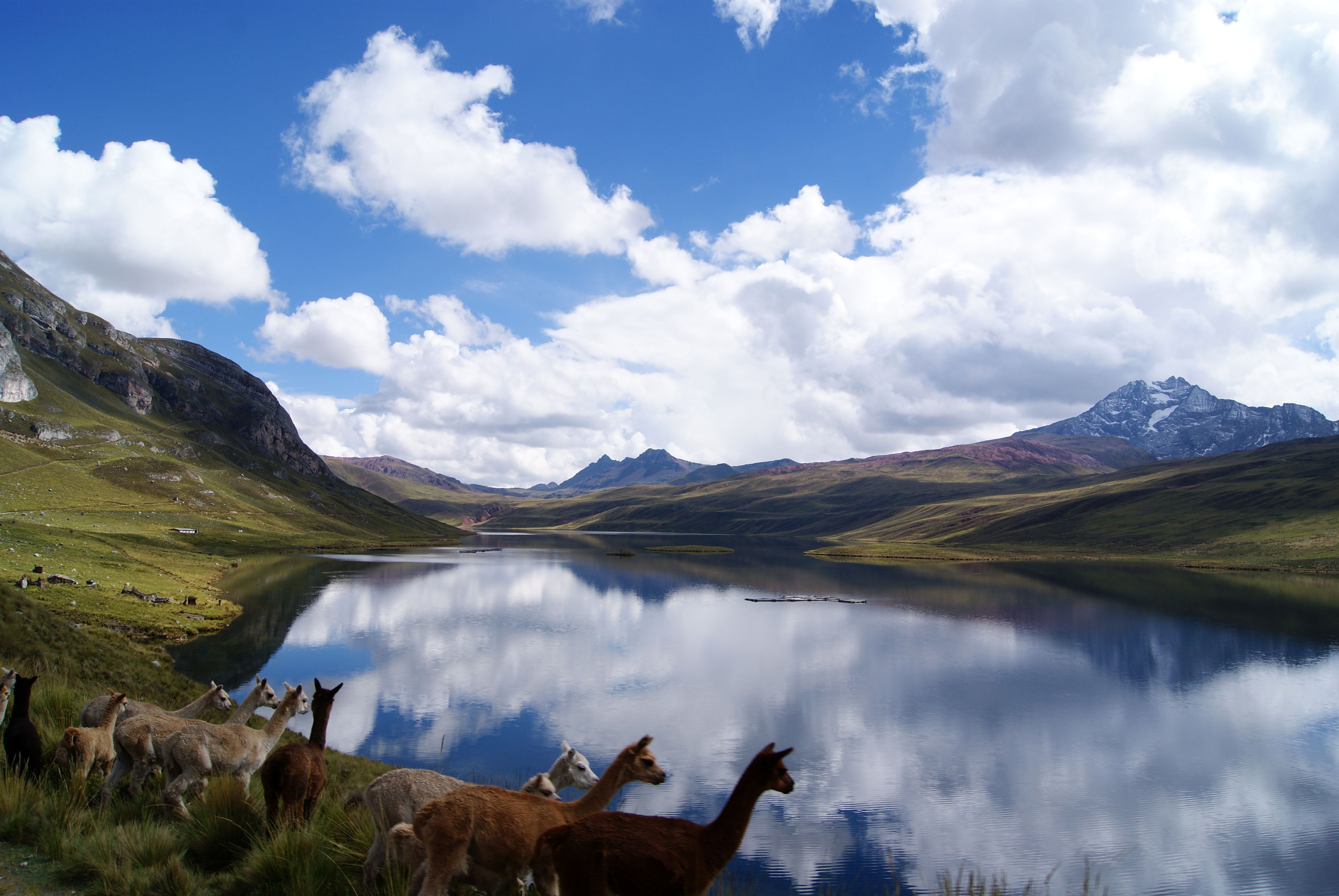
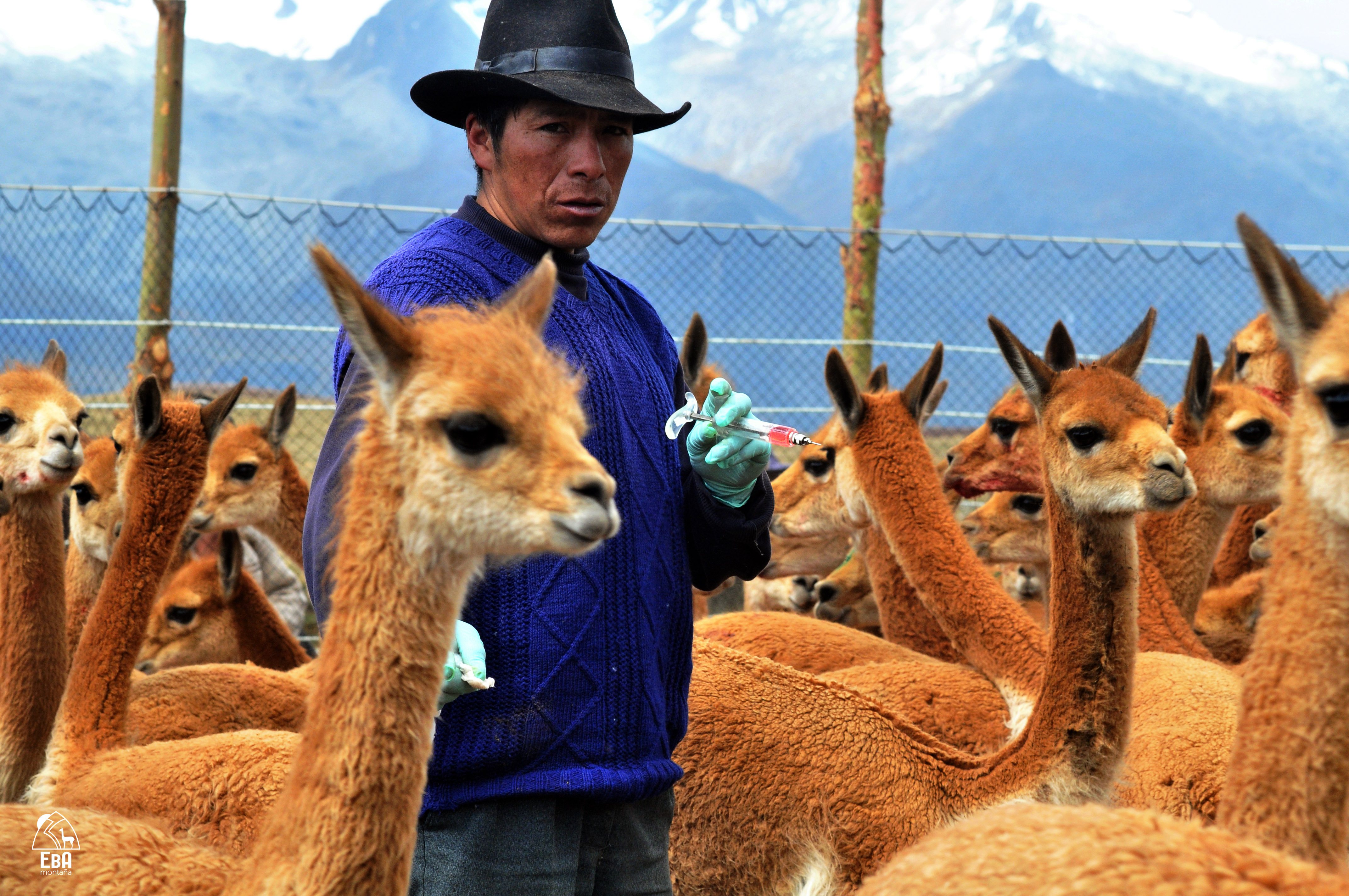
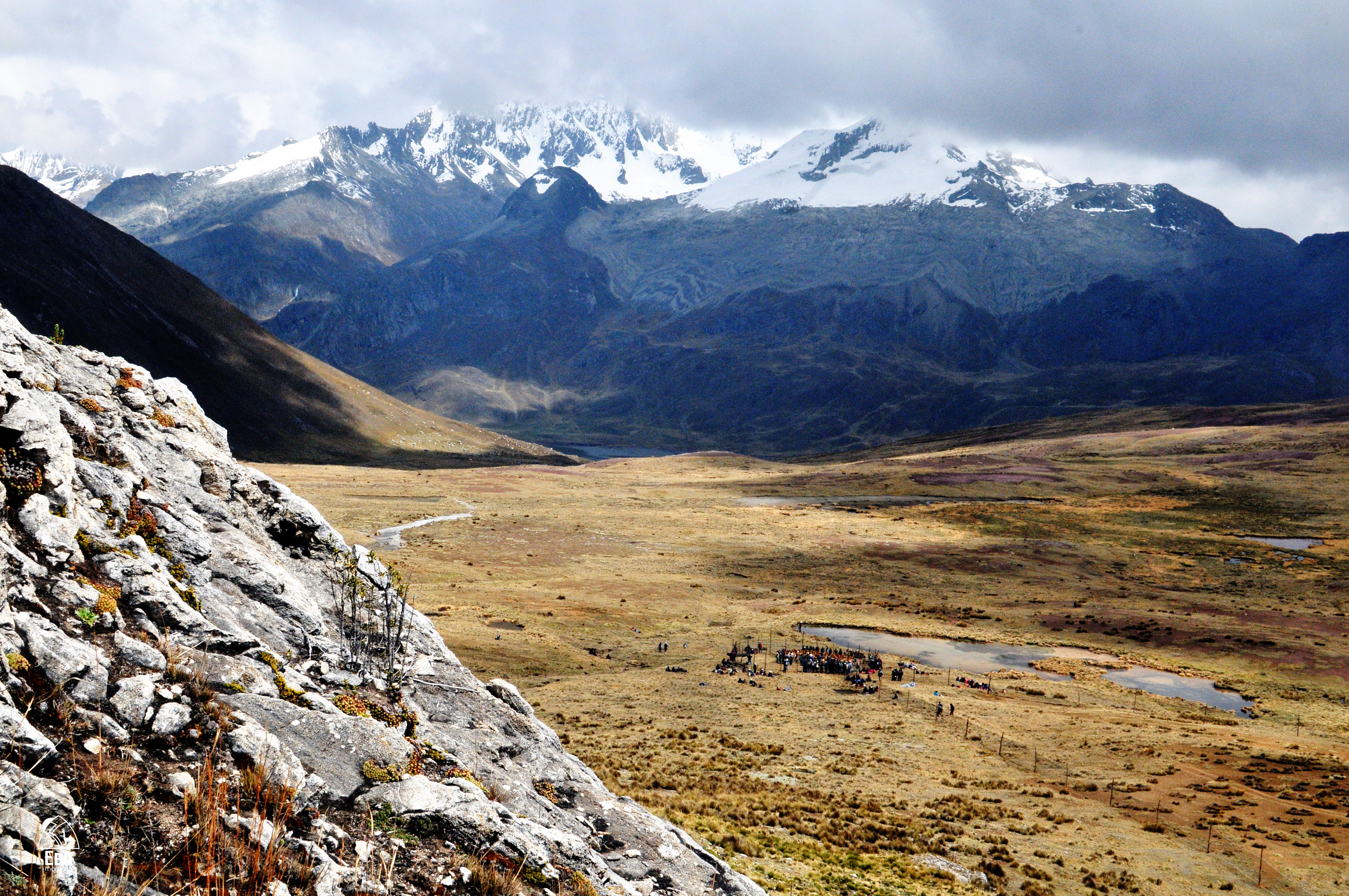
Assessments and Background Documents
'EbA'luacion de la vulnerabilidad al cambio climatico (2015)
Mt EbA Peru Vulnerability & Impact Assessment of RPNYC - Main Study
Mt EbA Peru Vulnerability & Impact Assessment of RPNYC - Context
Mt EbA Peru Vulnerability & Impact Assessment of RPNYC - Future climate scenarios
(2014) Peru Vulnerability and Impact Assessment (VIA) - Technical Summary
Reports
Brochures, Posters, Communications Products
Knowledge Products
Cambio climático en la Reserva Paisajística Nor Yauyos Cochas
El proyecto EbA Montaña trabaja con el SERNANP y las comunidades campesinas de la Reserva Paisajística Nor Yauyos Cochas para que se adapten al cambio climático. Conoce más del proyecto y las medidas de adaptación basada en ecosistemas que vienen implementando en este video.
The objective of this Peru pilot project under the global Ecosystem-based Adaptation (EbA) in Mountains Programme was to reduce the vulnerability of Peru to climate change impacts through piloting EbA options with particular emphasis on mountain ecosystems in the Nor Yauyos-Cochas Landscape Reserve.
It supported four outputs:
- The development of decision making tools for ecosystem based adaptation for assessing ecosystem resilience,
- Field testing the tools in the pilot countries,
- Making investments in and building capacity for EbA at select demonstration sites, and
- Establishing the economic benefits and financial costs of EbA, to guide national policies.
The project is a collaborative initiative of the United Nations Environment Programme (UNEP), the International Union for Conservation of Nature (IUCN) and the United Nations Development Programme (UNDP), funded by Germany’s Federal Ministry for the Environment, Nature Conservation, Building and Nuclear Safety (BMUB). In Peru, the programme is commissioned by the Ministry of Environment of Peru (MINAM for its Spanish acronym) and is implemented in the Nor Yauyos-Cochas Landscape Reserve with the support of the National Service of Natural Protected Areas (SERNANP for its Spanish acronym). The activities under IUCN’s responsibility are implemented in partnership with the Mountain Institute (TMI).
Some key accomplishments for the project include:
- A Vulnerability Impact Assessment (VIA) has been carried out to determine which EbA interventions can be used to support the communities in the selected project area.
- Three vulnerable areas have been identified in the NYCLR: Canchayllo, Miraflores and Tanta. Two EbA measures per area are being implemented.
- Information from the VIA (Vulnerability and Impact Assessment) for the NYCLR is being incorporated into the updated version of the NYCLR Master Plan.
- Support to both regional governments in Junin and Lima in the updating of their Regional Climate Change Strategies and the addition of EbA approaches to these tools.
- A local Communication Network for the NYCLR has been developed by the project. 11 park rangers and 21 students of the NYCLR have learnt about climate change and how to use communication tools for their own development.
- In Tanta, the community decided to free the Moyobamba area (vicuña natural habitat) of domestic animals to be an exclusive area for vicuñas.
- Capacity building and technical assistance in livestock and vicuña management, including animal husbandry of vicuña population.
- Installation of fences in 2000 hectares of communal land for livestock, and conservation of 1500 hectares of vicuña habitat.
- In Miraflores and Canchayllo no regret measures are being implemented. In both places local villagers have become local researchers and have strengthen their capacity in pasture and water management.
- In Canchayllo, a natural water reservoir dam was restored to reduce water filtration and ensure its storage during the dry season. Also, an underground pipe was restored to transport water from the upper part of the watershed (near Chacara Lake) to the community farm (Jutupuqio).
- In Miraflores, a protection zone (5ha) was enlarged around the Yanacancha lakes encircling the upper micro-watershed in order to prevent cattle and other animals from entering the area.
Policy-related accomplishments:
- In August 2015, Peru officially approved Policy Guidelines for Public Investment in Biodiversity and Ecosystems, with the expectation that this instrument will facilitate new and additional public investment aligned with the National Biodiversity Strategy.
- Of particular interest is that the UNDP BIOFIN and the Peru Mountain EbA projects worked together since February 2015 in close coordination with the Ministries of Environment and Economy and Finance to facilitate the incorporation of climate change and specifically EbA into the guidelines. For example, the consideration of climate change as a cross-cutting issue is included as one of the Strategic Policy Guidelines (p6).
- As next steps, BIOFIN and the Peru Mountain EbA project are collaborating in the design of a pilot Public Investment Project for the community of Tomas in the Nor Yauyos Cochas Landscape Reserve, as an opportunity to replicate EbA actions undertaken in Tanta and taking advantage of the political will and support of the Tomas municipality.
- Following this, UNDP and other agencies will support MINAM and MEF in capacity building of local and regional governments and development of additional pilots, as part of an effort to expand the use out the guidelines at the national level. Technical support will also be provided to develop impact indicators to be used by MINAM and MEF of the biodiversity and ecosystem-focused PIPs.
- The Peru Intended Nationally Determined Contribution (INDC) is currently being developed. The project team has contributed by reviewing the draft and providing recommendations on how to integrate EbA. The draft INDC includes EbA measures in its sector/system specific adaptation contributions for water, agriculture and forestry. The INDC even refers to the Mountain EbA Programme specifically as a key project that has contributed to the adaptation process in Peru.
 Learning by doing: the construction of the approach and program EbA, Lunahuana, Cañete, 25 to May 30, 2015 - The third Global technical workshop on ecosystem-based adaptation learning for the Global Mountain EbA programme, which is running in Nepal, Uganda and Peru, was held. The workshop aimed to identify and assess the contributions that the program has made in EbA mainstreaming in public policies and in building resilience and adaptive capacity of local populations.
Learning by doing: the construction of the approach and program EbA, Lunahuana, Cañete, 25 to May 30, 2015 - The third Global technical workshop on ecosystem-based adaptation learning for the Global Mountain EbA programme, which is running in Nepal, Uganda and Peru, was held. The workshop aimed to identify and assess the contributions that the program has made in EbA mainstreaming in public policies and in building resilience and adaptive capacity of local populations.
 CRiSTAL Parques, 26-29 January, 2015 - Del 26 al 29 de enero de 2015 se aplicó, en la Reserva Paisajística Nor Yauyos Cochas (RPNYC) de Perú, la herramienta CRiSTAL Parques, un instrumento de apoyo a la toma de decisiones que ayuda a los profesionales de la conservación y a los responsables de Áreas Protegidas (AP) a integrar riesgos climáticos en su planificación.
CRiSTAL Parques, 26-29 January, 2015 - Del 26 al 29 de enero de 2015 se aplicó, en la Reserva Paisajística Nor Yauyos Cochas (RPNYC) de Perú, la herramienta CRiSTAL Parques, un instrumento de apoyo a la toma de decisiones que ayuda a los profesionales de la conservación y a los responsables de Áreas Protegidas (AP) a integrar riesgos climáticos en su planificación.
 Ruedo en las alturas - El Chaccu, tradición ancestral de arreo de vicuñas, es hoy una importante medida de adaptación al cambio climático basada en ecosistemas.
Ruedo en las alturas - El Chaccu, tradición ancestral de arreo de vicuñas, es hoy una importante medida de adaptación al cambio climático basada en ecosistemas.
 Dioses del agua - Para los pobladores de Canchayllo, distrito de Jauja, en la Reserva Paisajística Nor Yauyos Cochas, el cambio climático ha sido una buena excusa para el ingenio y los buenos reflejos. Ahí se han modificado comportamientos, infraestructura y organización con el fin de potenciar, conservar y restaurar la administración de pastos y agua de la zona. Esta es su historia.
Dioses del agua - Para los pobladores de Canchayllo, distrito de Jauja, en la Reserva Paisajística Nor Yauyos Cochas, el cambio climático ha sido una buena excusa para el ingenio y los buenos reflejos. Ahí se han modificado comportamientos, infraestructura y organización con el fin de potenciar, conservar y restaurar la administración de pastos y agua de la zona. Esta es su historia.
 Viaje por los ecosistemas del Perú, Lima, 7 December 2014 - Junto a un cuentacuentos y pobladores de la costa, sierra y selva del Perú, los proyectos EbA Montaña, EBA Amazonía y Humboldt del Programa de las Naciones Unidas para el Desarrollo (PNUD), presentaron en el Auditorio Principal de la feria Voces por el clima -espacio para la sociedad civil en el marco de la COP20 en Lima-, “Mi montaña, mi bosque, mi mar: nuestro pan de cada día”, una puesta en escena que utilizó la tradición oral para contar cómo las comunidades se están adaptando al cambio climático.
Viaje por los ecosistemas del Perú, Lima, 7 December 2014 - Junto a un cuentacuentos y pobladores de la costa, sierra y selva del Perú, los proyectos EbA Montaña, EBA Amazonía y Humboldt del Programa de las Naciones Unidas para el Desarrollo (PNUD), presentaron en el Auditorio Principal de la feria Voces por el clima -espacio para la sociedad civil en el marco de la COP20 en Lima-, “Mi montaña, mi bosque, mi mar: nuestro pan de cada día”, una puesta en escena que utilizó la tradición oral para contar cómo las comunidades se están adaptando al cambio climático.
 Presentan avances en el Proyecto EbA Montaña, Huancayo, 4 February 2015 - El 4 de febrero en la ciudad de Huancayo, se reunieron los miembros del Comité Directivo del Proyecto EbA Montaña para informar acerca de los avances del proyecto, discutir el Plan Operativo Anual y la presentación de los resultados del estudio de Vulnerabilidad, Impacto y Adaptación al cambio climático (VIA) en la Reserva Paisajística Nor Yauyos Cochas (RPNYC), área de intervención del proyecto, a cargo del equipo de Centro de Datos para la Conservación (CDC)-Universidad Nacional Agraria La Molina y la Universidad de Columbia.
Presentan avances en el Proyecto EbA Montaña, Huancayo, 4 February 2015 - El 4 de febrero en la ciudad de Huancayo, se reunieron los miembros del Comité Directivo del Proyecto EbA Montaña para informar acerca de los avances del proyecto, discutir el Plan Operativo Anual y la presentación de los resultados del estudio de Vulnerabilidad, Impacto y Adaptación al cambio climático (VIA) en la Reserva Paisajística Nor Yauyos Cochas (RPNYC), área de intervención del proyecto, a cargo del equipo de Centro de Datos para la Conservación (CDC)-Universidad Nacional Agraria La Molina y la Universidad de Columbia.
 Proyecto EbA Montaña participa en el Foro Mundial de Montañas en Cusco, 23-25 May 2014 - El Foro Mundial de Montañas (WMF, por sus siglas en inglés) -un espacio de encuentro para la ciencia, los tomadores de decisión y los activistas del Desarrollo Sostenible de las Montañas del mundo- se desarrolló en Cusco, Perú del 23 al 25 de mayo de 2014. El objetivo fue crear un espacio que permita la discusión y el intercambio de experiencias en temas vinculados al cambio climático, agricultura familiar, comunidades y ciudades de montaña, en el marco del trabajo en los ecosistemas de montaña.
Proyecto EbA Montaña participa en el Foro Mundial de Montañas en Cusco, 23-25 May 2014 - El Foro Mundial de Montañas (WMF, por sus siglas en inglés) -un espacio de encuentro para la ciencia, los tomadores de decisión y los activistas del Desarrollo Sostenible de las Montañas del mundo- se desarrolló en Cusco, Perú del 23 al 25 de mayo de 2014. El objetivo fue crear un espacio que permita la discusión y el intercambio de experiencias en temas vinculados al cambio climático, agricultura familiar, comunidades y ciudades de montaña, en el marco del trabajo en los ecosistemas de montaña.
 EbA Montaña en Perú identifica vulnerabilidad e impacto frente al cambio climático de la RPNYC, 26 March 2014, se presentó en la Universidad Nacional Agraria La Molina (UNALM) la Evaluación de Vulnerabilidad e Impacto (EVI) frente al cambio climático de la Reserva Paisajística Nor Yauyos Cochas, el cual forma parte del proyecto Adaptación basada en Ecosistemas de Montaña (EbA Montaña) en Perú. Fue preparado entre agosto de 2012 y diciembre de 2013 gracia a un acuerdo entre el Programa de las Naciones Unidas para el Medio Ambiente (PNUMA) y la Fundación para el Desarrollo Agrario (FDA) de la UNALM.
EbA Montaña en Perú identifica vulnerabilidad e impacto frente al cambio climático de la RPNYC, 26 March 2014, se presentó en la Universidad Nacional Agraria La Molina (UNALM) la Evaluación de Vulnerabilidad e Impacto (EVI) frente al cambio climático de la Reserva Paisajística Nor Yauyos Cochas, el cual forma parte del proyecto Adaptación basada en Ecosistemas de Montaña (EbA Montaña) en Perú. Fue preparado entre agosto de 2012 y diciembre de 2013 gracia a un acuerdo entre el Programa de las Naciones Unidas para el Medio Ambiente (PNUMA) y la Fundación para el Desarrollo Agrario (FDA) de la UNALM.
Global Ecosystems Based Adaptation in Mountains Programme
Human wellbeing and livelihoods cannot be sustained without healthy ecosystems. Mountain ecosystems are particularly important, in that they maintain rich ecological processes and provide essential goods and services, especially water, not only to mountain people, but also to downstream lowlands where demand from population centers, agriculture and industry is high. These ecosystems, however, face severe threats from unsustainable land use practices (overgrazing and non-conservation agriculture), illegal wood extraction, development of large-scale infrastructure (dams, roads) and unsustainable natural resource projects (hydrocarbons, mining).
Climate change further compounds these threats by increasing levels of exposure to droughts, floods (which in turn results in an increase in landslides) and changes in seasonality. These impacts both undermine the resilience of the mountain ecosystems and increase the vulnerability of the local mountain communities, whose livelihoods and wellbeing depend on their services. Mountain people tend to be among the world’s poorest and most marginalized populations. Not only do many share the disadvantages of rural poverty and ethnic or religious discrimination. They also face additional challenges to subsistence brought about by elevation, rough topography and severe climate.
Through the global Ecosystems-based Adaptation (EBA) in Mountains Programme, UNDP, UNEP and IUCN, with funding from the German Government, used sustainable management, conservation and restoration of ecosystems, as part of an overall adaptation strategy, to reduce the vulnerability and enhance the resilience of select fragile mountain ecosystems and their local communities to climate change impacts.
Photos provided by: UNDP Peru, Carlos Diaz Huertas and Adriana Kato, UNDP Nepal, Tine Rossing, Andrea Egan, UNDP Uganda, Ed Barrows and James Leslie.
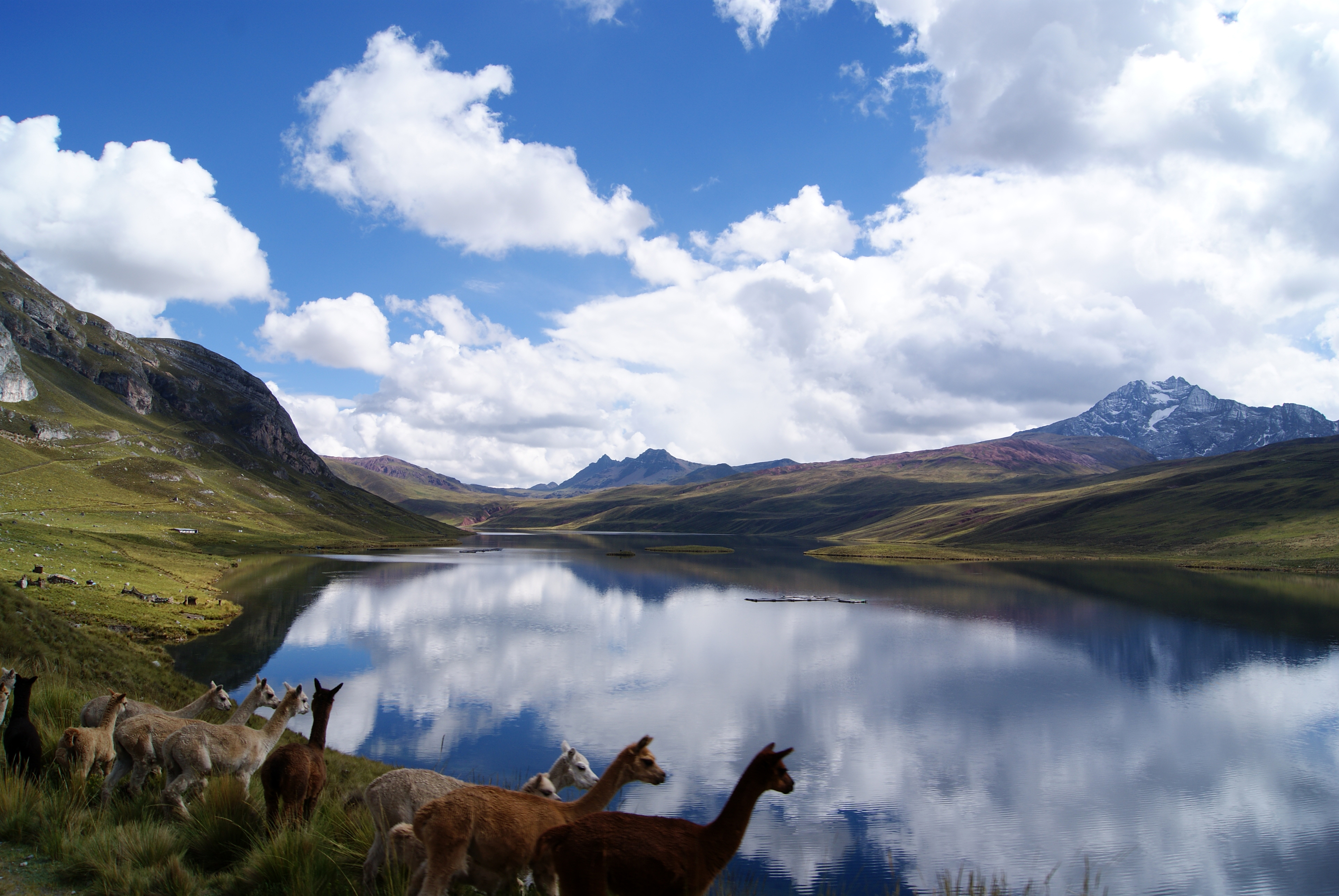
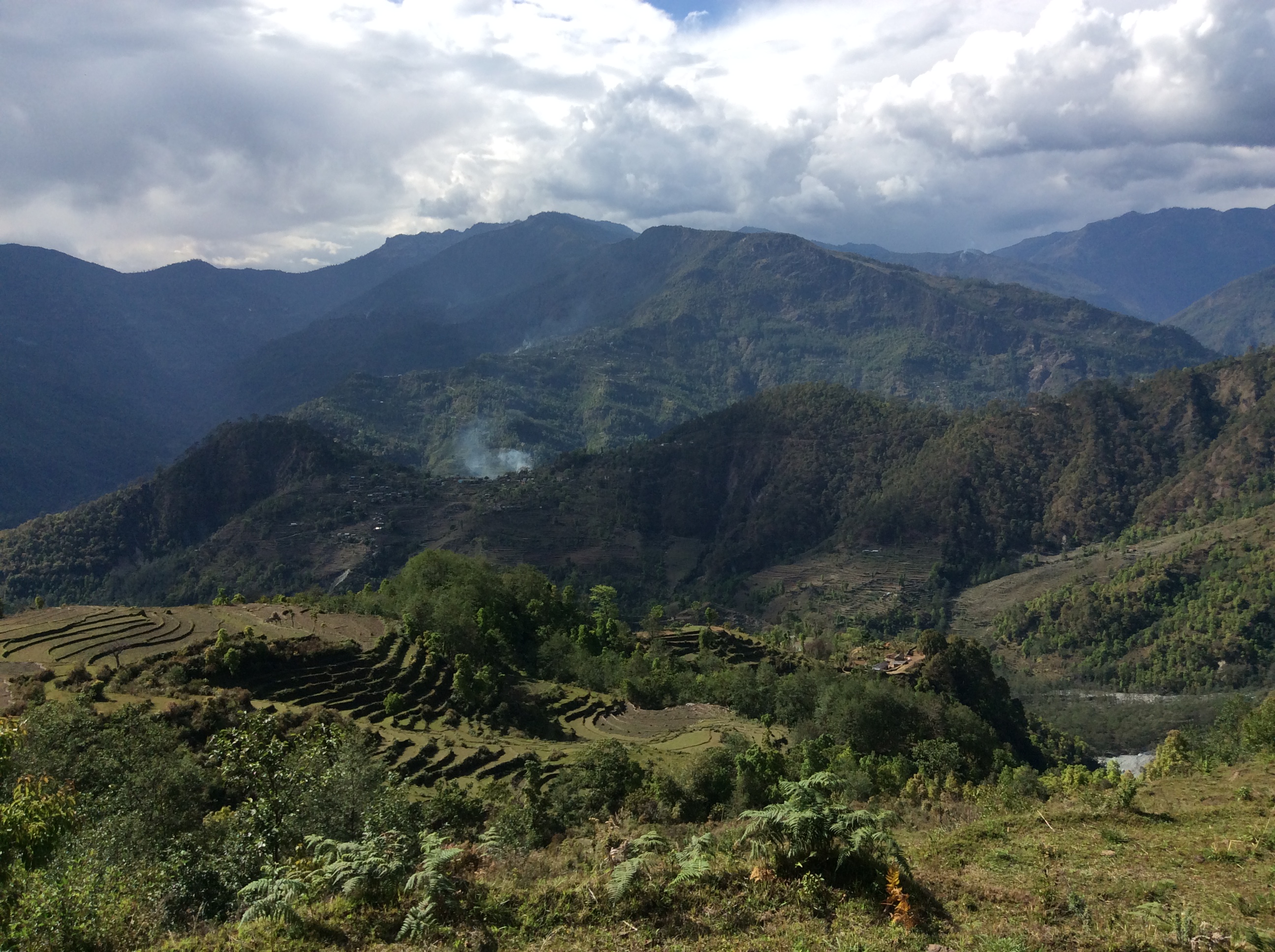

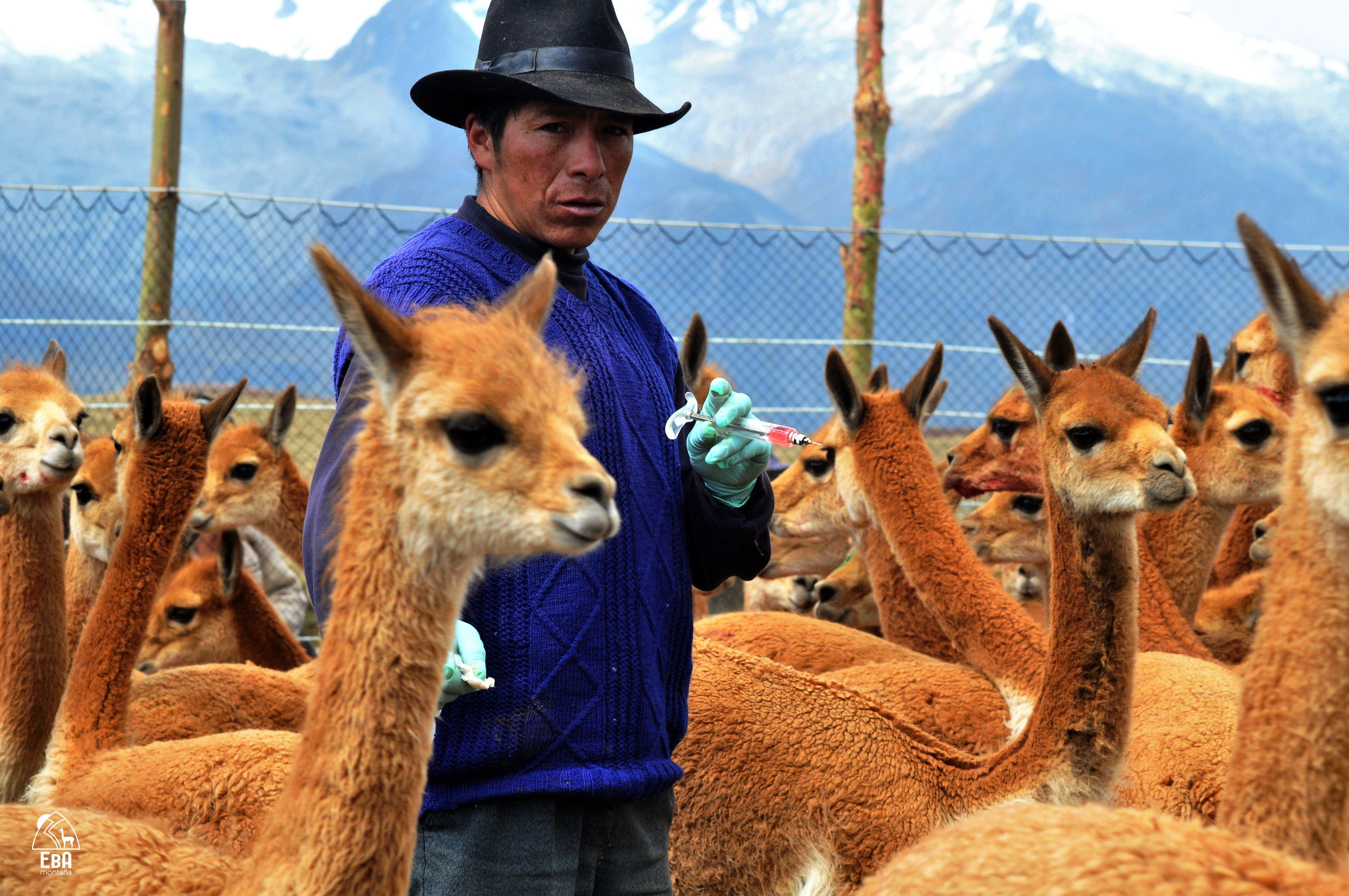
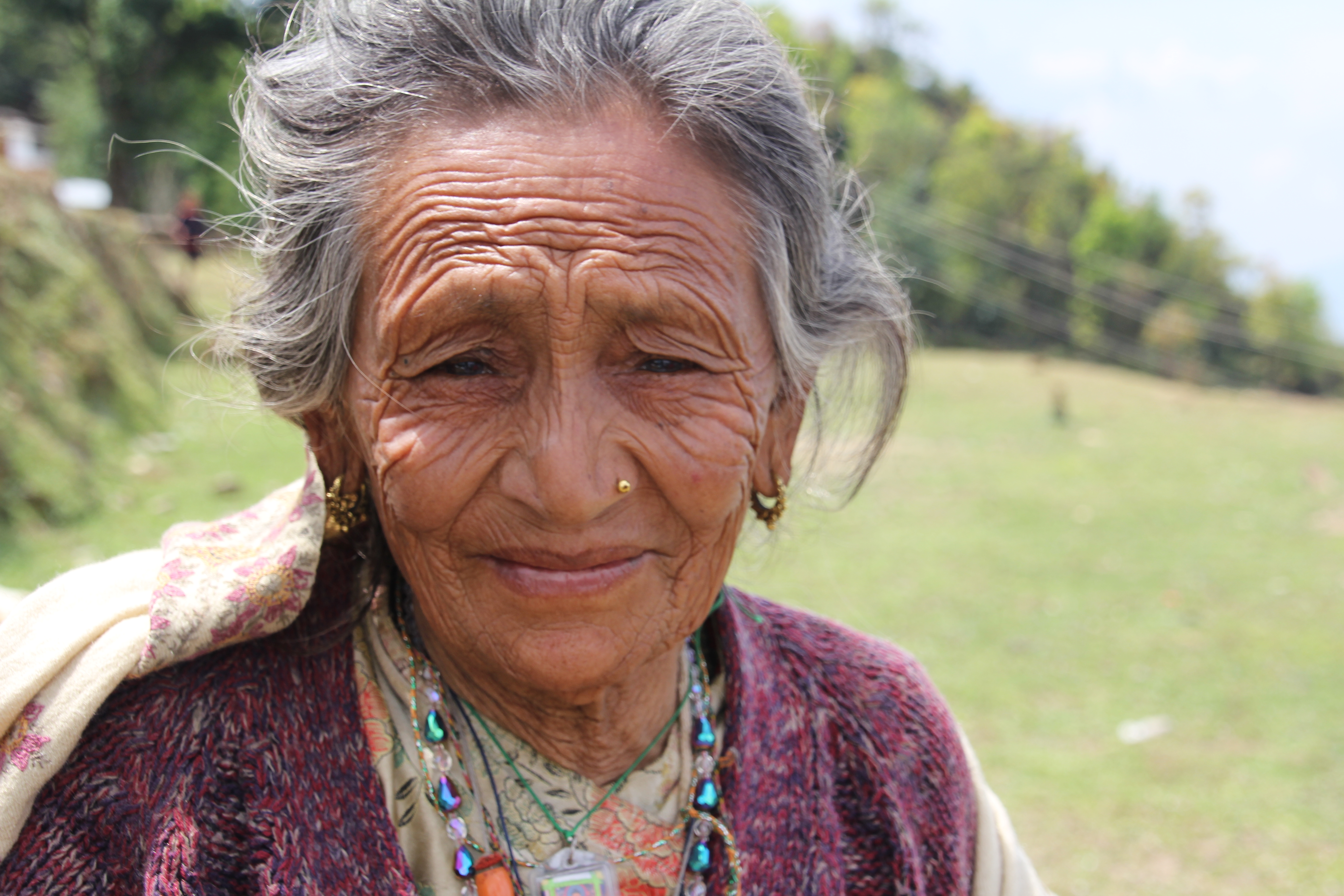
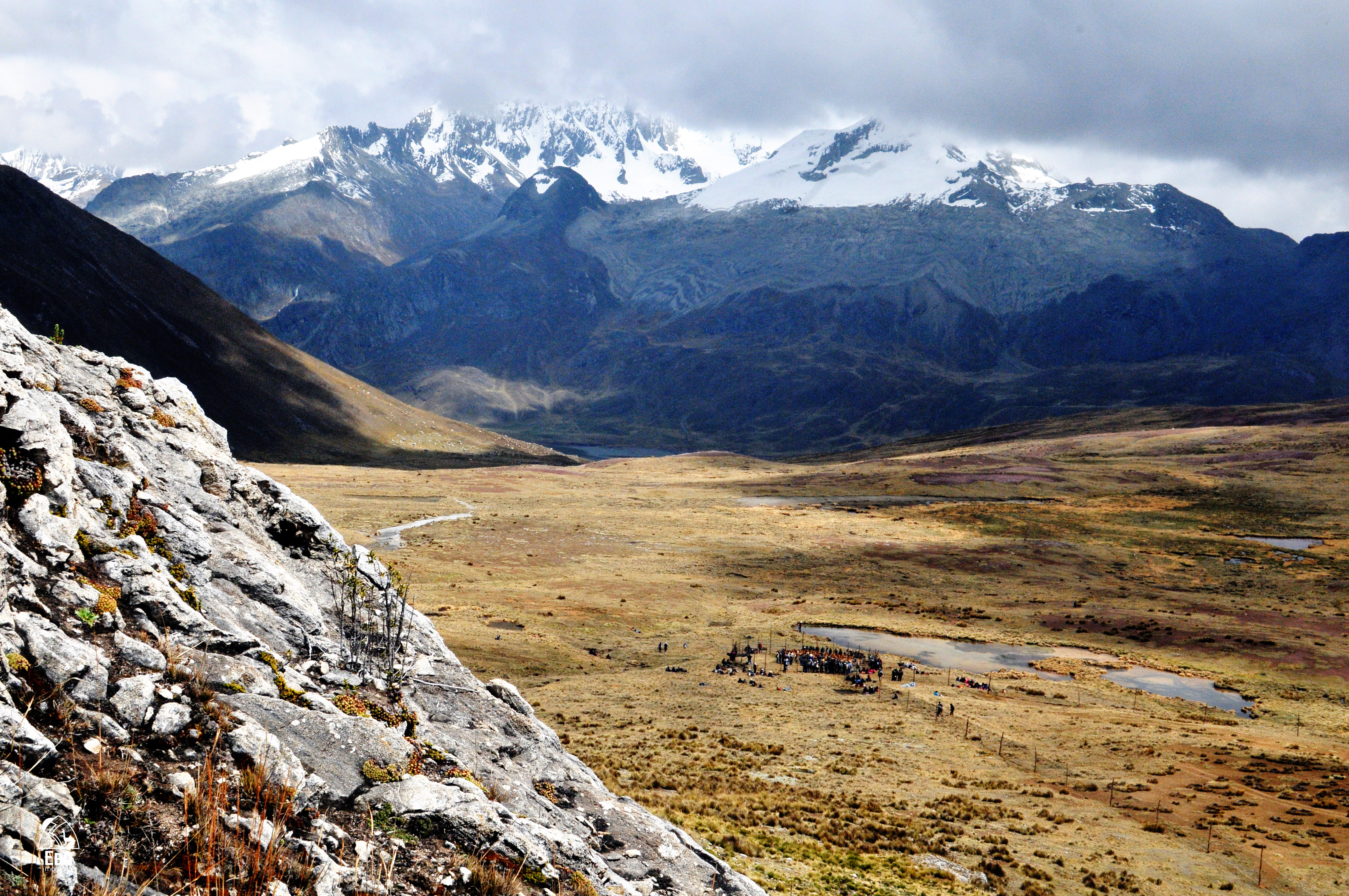

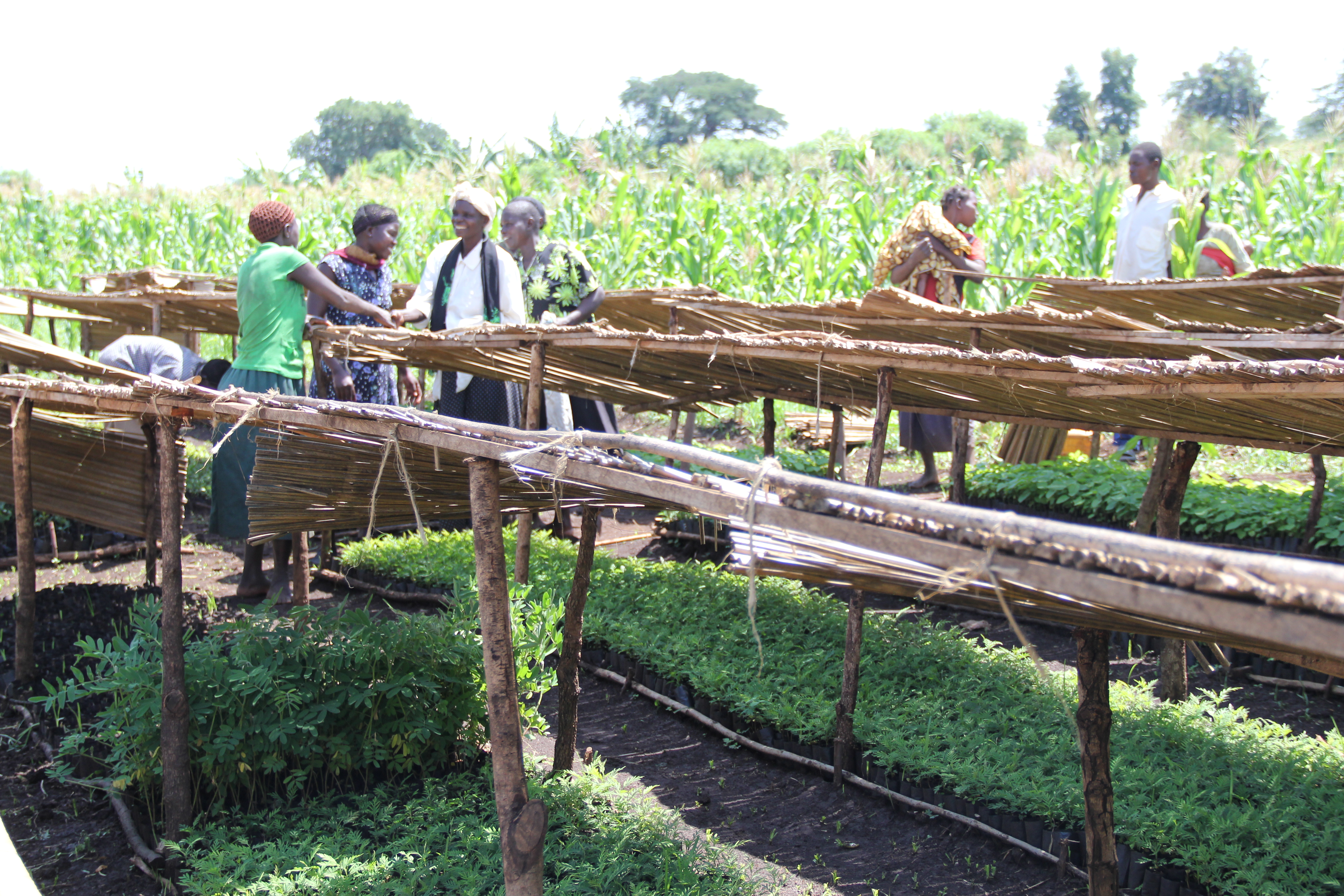
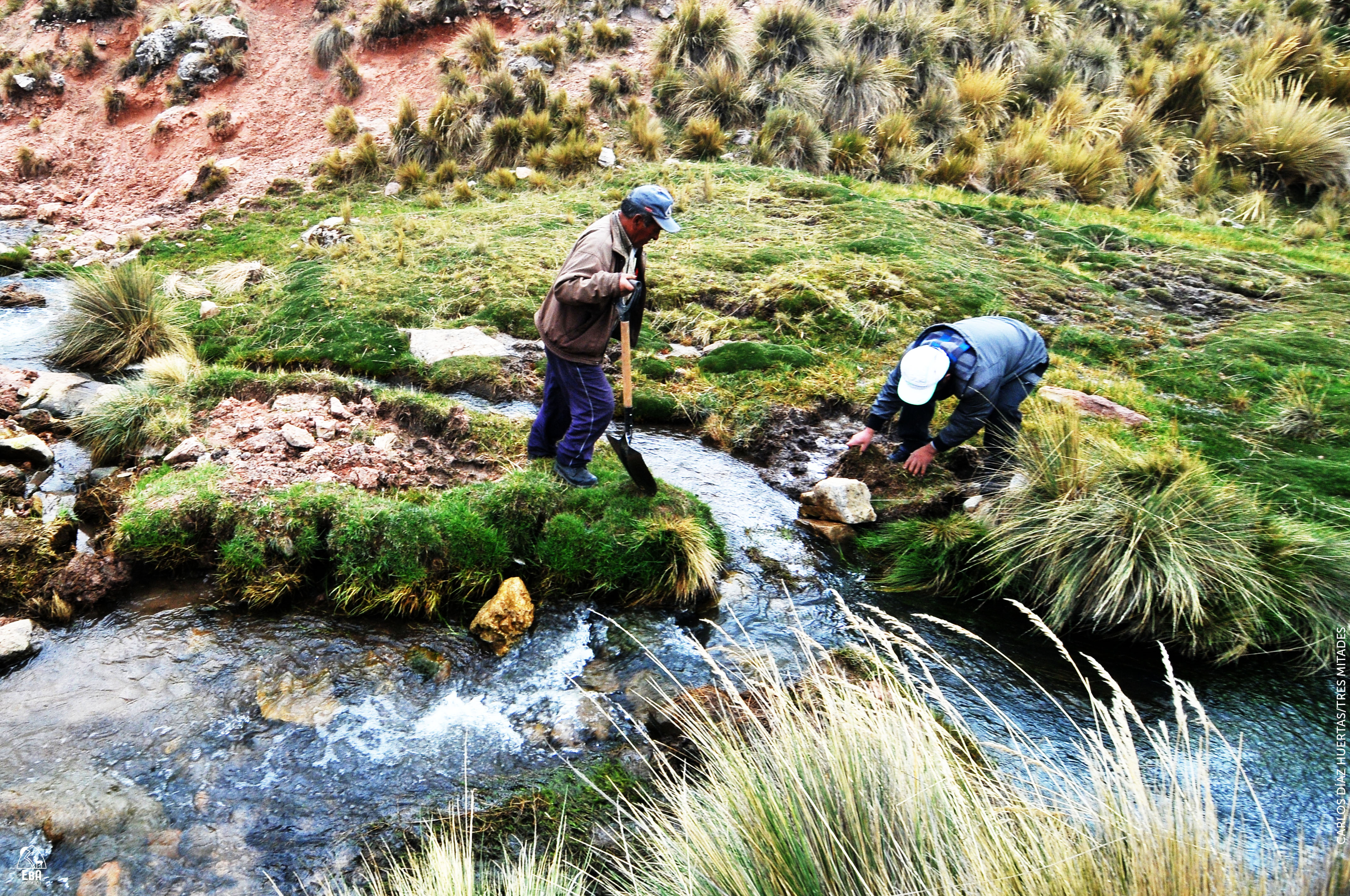

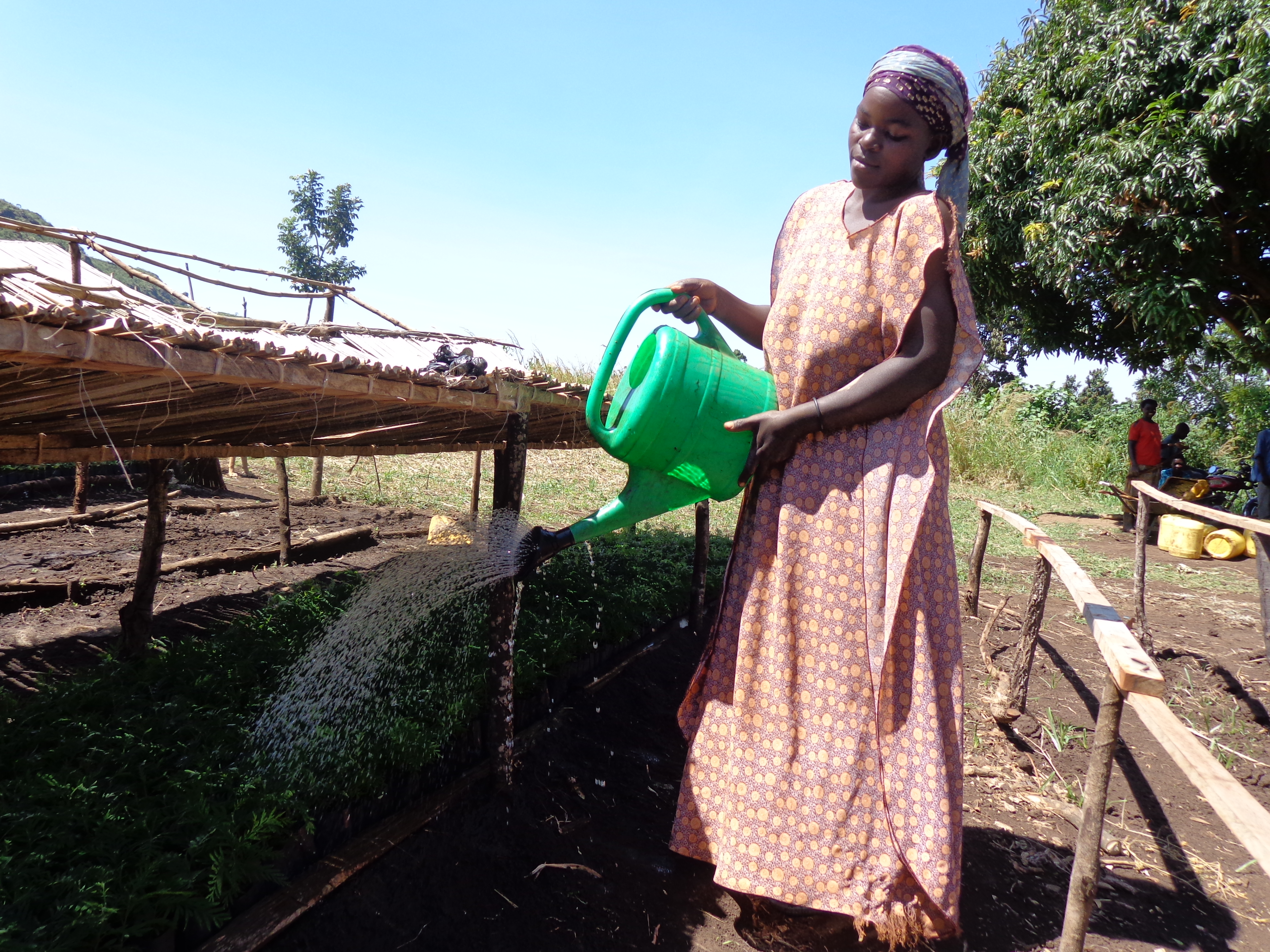
Assessments and Background Documents
Making the Case for Ecosystem-based Adaptation: The Global Mountain EbA Programme in Nepal, Peru and Uganda.
Project Brief / Fact Sheet
Learning Brief 4 - Making the case for policy change and financing for Ecosystem-based Adaptation
Learning Brief 3 - Making the economic case for Ecosystem-based Adaptation
Learning Brief 2 - Generating multiple benefits from Ecosystem-based Adaptation in Mountain Ecosystems
Learning Brief 1 - Introduction to Ecosystem-based Adaptation: A nature-based response to climate change
Training & Tools
UNEP-WCMC (2015) VIA Guidance Document: Executive Summary - RU
UNEP-WCMC (2015) VIA Guidance Document: Executive Summary - PT
UNEP-WCMC (2015) VIA Guidance Document: Executive Summary - SP
UNEP-WCMC (2015) VIA Guidance Document: Executive Summary - FR
Brochures, Posters, Communications Products
Mt EbA Programme (2014) Programme Brochure: Ecosystem-based Adaptation: Adapting to Climate Change in Mountain Ecosystems
UNEP (2010) Making the Case for Ecosystem-based Adaptation (Mt EbA Programme)
The Ecosystems-based Adaptation (EbA) in Mountains Programme is a global partnership jointly implemented by UNDP, UNEP and IUCN from 2011-2015, with funding from the Germany’s Federal Ministry for the Environment, Nature Conservation, Building and Nuclear Safety (BMUB). While global in scope, Uganda, Nepal and Peru were selected as pilot countries, due to their significant vulnerability to climate change, coupled with their endowment of fragile mountain ecosystems upon which a multitude of communities and economic activities depend.
The overarching Programme goal is to strengthen capacities of the involved governments and local communities to reduce vulnerability and increase resilience to the effects of climate change using EbA measures in targeted mountain ecosystems.
Expected programme results include:
- New and field tested methodologies and decision-making tools for EbA, including Vulnerability & Impact Assessments;
- Monitoring and Evaluation centered on ecosystem resilience; and
- Capacities and knowledge of all involved stakeholders (national, district and local level government, local communities and civil society organizations) will be enhanced for planning and implementing both early action “No Regrets” and longer-term EbA measures through pilot activities in target mountain ecosystems.
Based on evidence emerging from these processes, lessons will also be generated on how to use cost-benefit analyses to make an economic case for specific EbA measures. In close collaboration with key governments agencies, evidence and lessons will be generated on how to mainstream EbA into broader district and national policy and financing frameworks. These lessons can be scaled-up and shared as policy examples at regional and global levels beyond the three pilot countries. Overall, the resilience to climate change of targeted mountain ecosystems and their local custodians will be enhanced.
Outcome 1: Methodologies and tools for EbA decision making developed. The application of appropriate scientific methodologies and tools to assist decision makers on the effectiveness of the interventions is a critical ingredient of successful EbA approaches. In each pilot country, this outcome will finance a process that will assess, evaluate and develop appropriate methodologies for use in informing project adaptation actions. Additional results that will be generated include development of project baselines as well as comprehensive monitoring and evaluation mechanisms to monitor programme impacts. Indicators will be developed to specifically measure impacts related to ecosystem functioning and adaptive capacity.
Outcome 2: EbA methodologies and tools applied at ecosystem level. This outcome will finance the development of a capacity building approach that, in turn, will be used to apply the methodologies and tools developed under Outcome 1. In order to ensure sustainability in the use of the tools as well as ensuring that results from the programme are integrated in national processes, relevant stakeholders who were to be involved in the programme will be trained in the use and application of the tools.
Outcome 3: EbA pilot projects implemented in each pilot country and contributing towards ecosystem resilience and reduction of livelihood vulnerability in the face of climate change impacts. A number of EbA activities will be identified and selected for implementation based on the outputs of outcomes 1 and 2. In addition, 1) institutional roles and responsibilities for EbA will be agreed to by different stakeholders at all levels; 2) Institutional capacity of local governments and other key national institutions to plan, monitor and enforce EbA will be enhanced; 3) pilot projects focusing on water resources management and enhancement of soil conservation measures will be implemented; 4) market opportunities and access will be enhanced; and 5) lessons learned from pilot projects will be captured and disseminated.
Outcome 4: Business case for EbA at the local and national levels developed. To make an economic case for EbA, the project will identify and apply the best methods and practice for socio-economic evaluation of adaptation options. This will provide an economic justification for support from relevant government institutions for the use of EbA as a climate risk management strategy. To this end, i) an enabling environment for scaling-up EbA at national level will be created; and ii) information and capacities of key government stakeholders will be enhanced so as to integrate EBA into national development planning processes and climate change policies and strategies.
Outcome 5:New learning and knowledge on EbA generated. In early 2014, the scope of the Programme was expanded to include a new Learning and Knowledge Component. These new activities will strengthen learning about EbA at various levels namely 1) site level – i.e. the three pilot sites in Nor Yauyos-Cochas, Mount Elgon and Panchase – 2) country level (Peru, Uganda and Nepal), and 3) beyond (inter-country, regional and global levels). Systematization of generated information and learning wil be used by partners to generate new science, insights and messages that can influence policy and practice on EBA in mountain ecosystems and beyond. The application of methodologies and tools, combined with implementation of pilot activities, will enable the Programme to shorten the learning curve for local and national institutions, and fast-track the transfer of knowledge and experience in building ecosystem and social resilience to climate change.
The EbA Mountain Ecosystems Programme is working in designated project sites in Nepal, Peru, and Uganda.
Adaptation to Climate Change through Integrated Water Harvesting Technologies in Yemen
As a Least Developed Country (LDC), Yemen is highly vulnerable to climate change-related impacts such as drought, extreme flooding, and sea level rise. These are serious concerns as Yemen's economy largely depends on its natural resources. In addition to having a predominantly semi-arid to arid climate, more than half the agriculture is rain-fed. Coupled with a rise in both droughts and floods, the Yemenis face an acute challenge in adapting to climate change induced stress on water resources.
Thus, the project “Adaptation to Climate Change through Integrated Water Harvesting Technologies in Yemen” aimed to reintroduce traditional and innovative water harvesting techniques to improve water availability to rainfed farmers and pastoralists who are highly vulnerable to climate change.
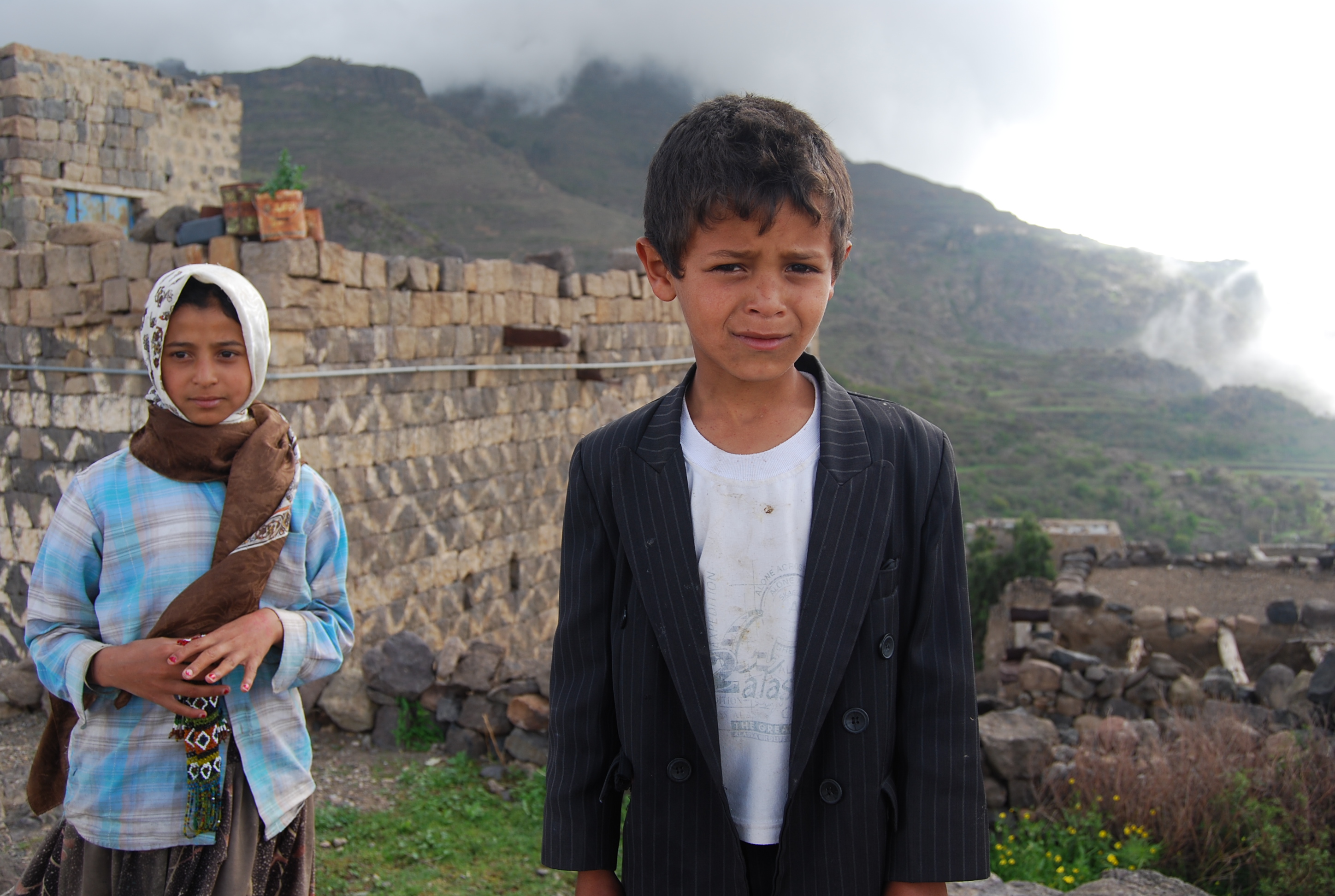

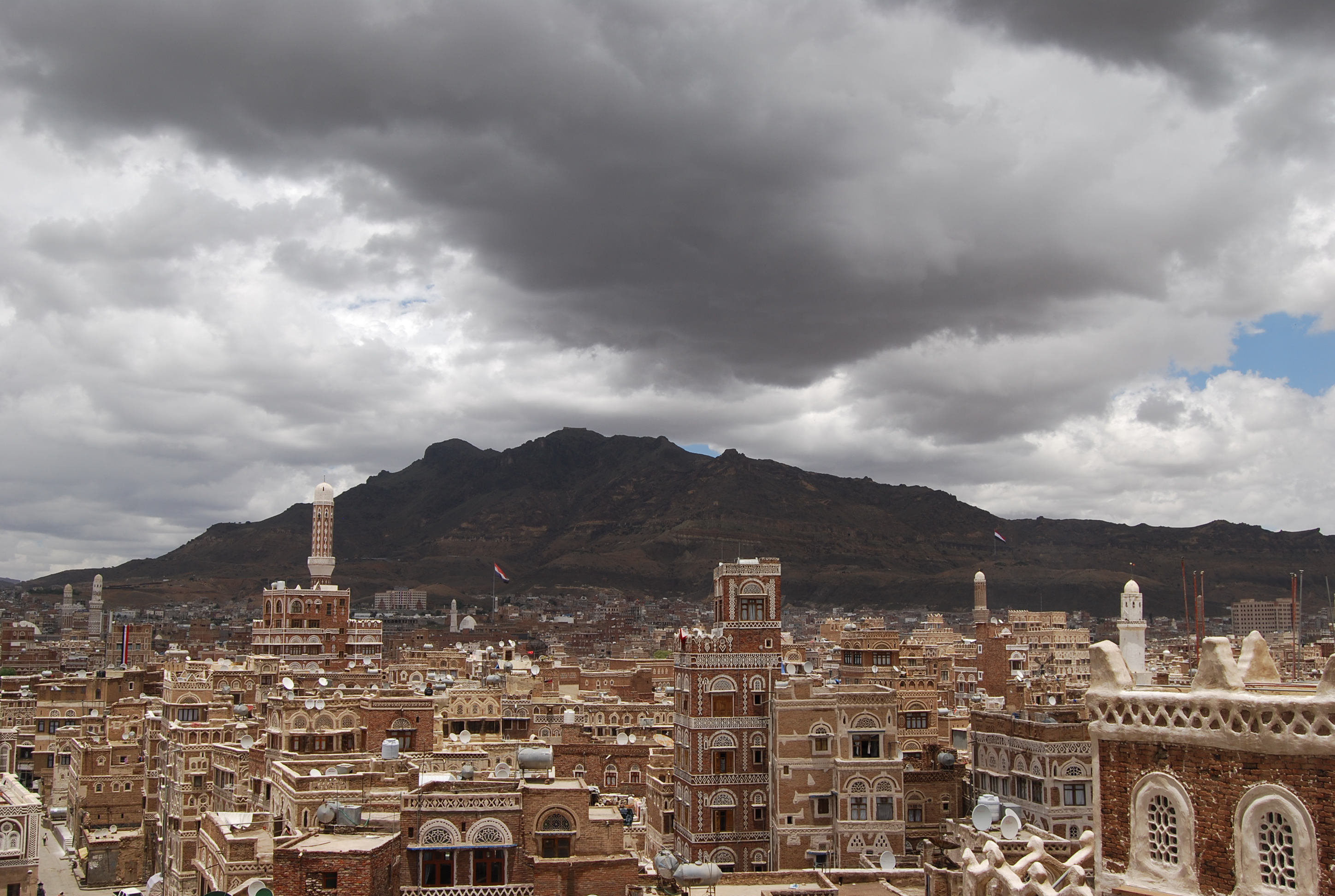
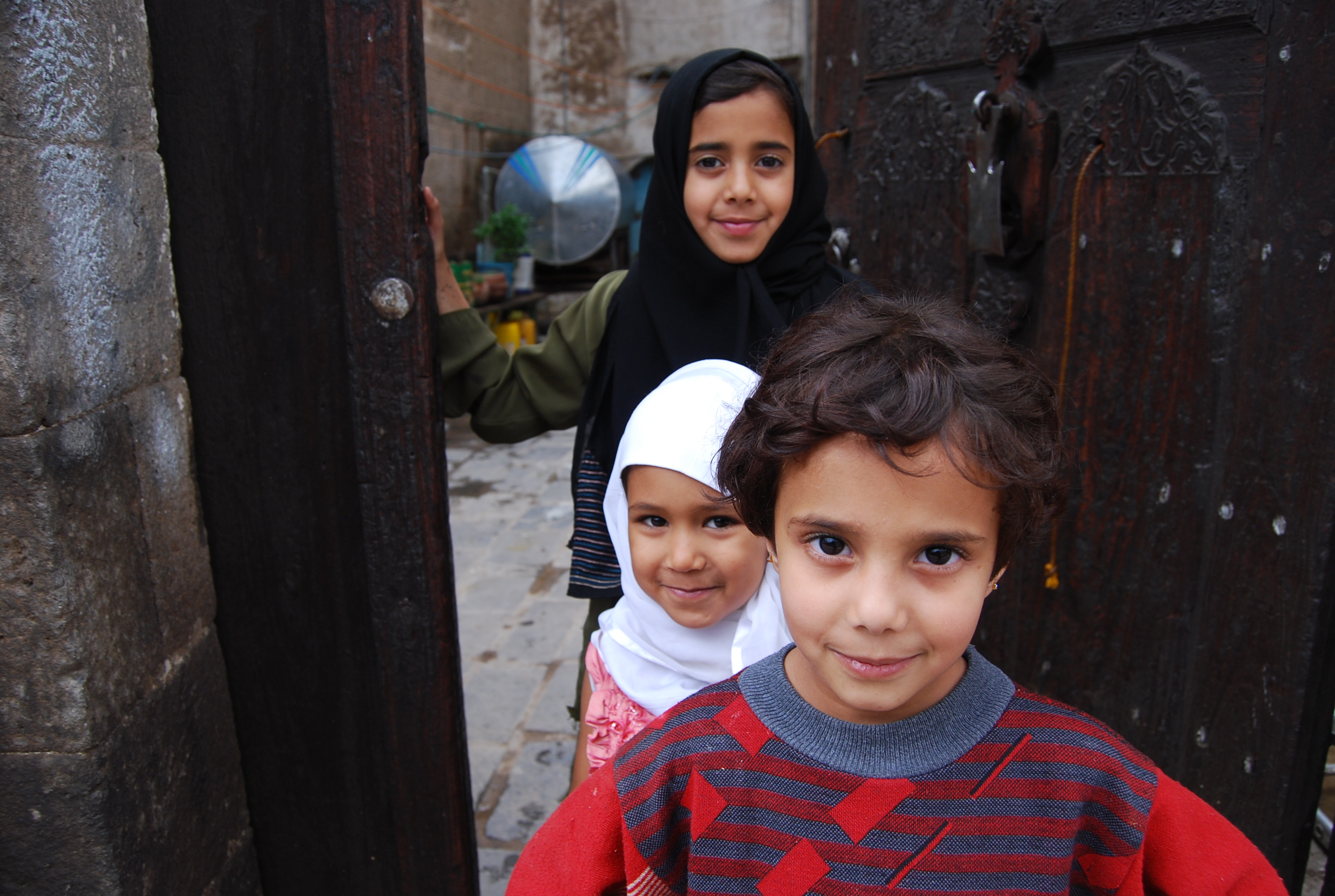
PIFs
(More information to come)
The project has three main components with the following associated outcomes –
- Development of policies for traditional and innovative water harvesting systems including development of GIS-based rainfall-runoff models (Output 1.1); integration of water harvesting regulations into the water laws of Yemen (Output 1.2) and; formulation of long term, climate resilient water plans that include integrated water harvesting (Output 1.3)
- Development of on-ground measures for water harvesting and rehabilitation of traditional water harvesting structures. This component includes the reintroduction of five traditional water harvesting technologies (Output 2.1); introduction of fog harvesting technology (Output 2.2); training of community members on construction and maintenance of water harvesting technologies (Output 2.3); establishment of integrated groundwater recharge systems (Output 2.4) and supplementary irrigation (Output 2.5) and; design and deployment of awareness raising programmes to promote socio-economic benefits of water harvesting (Output 2.6).
- Development of decentralised and community led water management systems including customer-oriented water distribution and seasonal rationing services for communal harvested water (Output 3.1); capacity building to support a range of water harvesting technology designs and maintenance requirements (Output 3.2) and; introduction of incentives, such as concessional micro-loans, community grants, employment guarantee (Output 3.3).
(More information to come)
(More information to come)
Strengthening Community Resilience to Climate Induced Natural Disasters in the Dili to Ainaro Road Development Corridor, Timor Leste
The government of Timor-Leste is currently investing heavily in transport infrastructure as a basis for securing the country’s long-term development goals. These investments are at risk as a result of climate change and therefore require a strategy to ensure their long-term sustenance. The Dili to Ainaro development corridor is one such region that is increasingly at risk from climate change and disaster related impacts including localized flooding, landslides and strong winds. Therefore, this project will focus on the populace dependent on critical economic infrastructure to make it more resilient through prevention and preparedness measures. Consequently, this will help to secure the medium to long-term development benefits of vulnerable local people of this region.
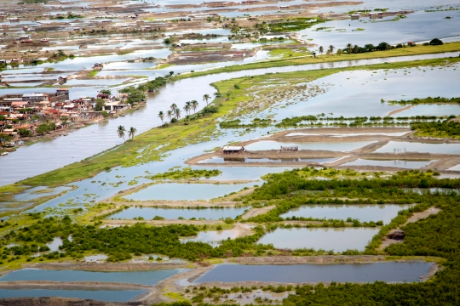
PIFs
Timor Leste – LDCF Project Identification Form (February 2013)
(More information to come)
The project has three main components with the following associated outcomes –
- Improved climate and disaster risk management is enabled through the establishment of a national training and knowledge hub focusing on climate risk and vulnerability assessment, damage and loss assessment, contingency planning among others (Outcome 1.1) and; the extension of national DRM policy and institutional roles to address climate change and disaster risk reduction measures, including assessment methods etc. (Outcome 1.2).
- Climate and disaster risk planning along with its budgeting and delivery is strengthened including the strengthening of district and sub-district Disaster Management Committees and District Disaster Operation Centres to plan, budget and deliver climate induced disaster prevention financing (Outcome 2.1) and; design of community to district level EWS systems for climate induced extreme events (Outcome 2.2).
- Investments are made in climate resilient community-based adaptation measures including community level climate change vulnerability and risk assessments with a specific focus on gender (Outcome 3.1) and; design and implementation of community level watershed management measures to reduce direct physical impacts of high intensity rainfall events in climate vulnerable hotspots along the Dili to Ainaro development corridor (Outcome 3.2).
(More information to come)
(More information to come)
'Joint Monitoring Dili to Ainaro Road Development: Strengthening community resilience in municipalities of Ermera, Aileu, Manufahi and Ermera', UNDP Timor-Leste, May 29, 2019.

Enhancing capacities of rural communities to pursue climate resilient livelihood in Sao Tome and Principe
Sao Tome and principe (STP) being a Least Developed Country (LDC) and Small Island Developing State (SIDS), is very vulnerable to the impacts of climate change. Coupled by the fact that agriculture, remains the biggest source of incomes for rural families, generating 70% of rural employment and about 80% of export revenues, renders the majority of STP’s populace extremely vulnerable to the vagaries of climate change. Further, the available climatic information indicates that the length of dry seasons is likely to increase in STP.
As a result this UNDP-supported, LDCF project, Enhancing capacities of rural communities to pursue climate resilient livelihood in Sao Tome and Principe, aims to strengthen the resilience of rural community livelihood options against climate change impacts in the Sao Tome districts of Caué, Me-Zochi, Principe, Lemba, Cantagalo, and Lobata (CMPLCL).
PIFs
Sao Tome and Principe – LDCF Project Identification Form (21 February 2013)
(More information to come)
The project has three main components with the following associated outcomes –
- Developing capacities of the key institutions of relevance to rural development and livelihoods to effectively support communities’ resilience and adaptation to climate change. This includes a training programme to provide technical capacity to develop agro-sylvo-pastoral adaptation technologies and climate resilient seeds and seedlings (Outcome 1.1); Design of a human and technical capacity development plans to convert the CATAP to a national agro-sylvo-pastoral climate change adaptation training center (Outcome 1.2); Training of 200 agricultural extension services n adaptation strategies (Outcome 1.3); Creation of districts and village level climate change platforms to facilitate dialogue and coordination for the implementation and monitoring of village and districts level annual adaptation plans (Outcome 1.4); Training of representatives of the districts and villages platforms, district governments assemblies on how to develop, implement and monitor annual adaptation plans (Outcome 1.5) and; Empowering and mobilizing community based organizations to efficiently contribute in the processes of identifying and addressing the underlying causes of vulnerability and developing adaptative practices (Outcome 1.6).
- Investments made for the protection of communities livelihoods against climate risks including the development of small scale community managed infrastructure to fight against climate induced erosion, crop fields flooding etc. (Outcome 2.1) and; Development of extreme climate and weather disaster safety nets mechanisms for managing risks associated with climate variability impacts on foods resources, natural and economic assets and livelihoods (Outcome 2.2)
- Diffusion of climate resilient livelihoods strategies in the most vulnerable communities including the development of district and village annual and multiyear adaptation plans to identify, prioritize, coordinate and implement adaptation actions of the supporting institutions and the communities (Outcome 3.1); Implementation of priority community adaptation projects focusing on enhancement of current livelihoods resilience and livelihood diversification (Outcome 3.2); Development of agro-sylvo-pastoral adaptation technologies and climate resilient seeds and seedlings (Outcome 3.3) and; Design of micro-credit products to increase resilience of current livelihoods and support alternatives income generating activities in village adaptation plans (Outcome 3.4)
(More information to come)
(More information to come)
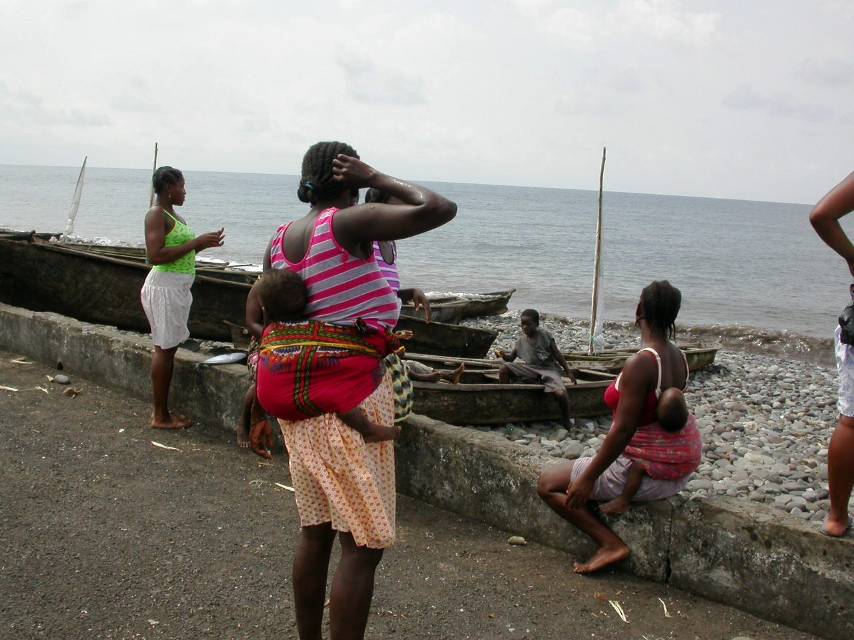
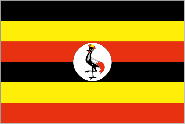

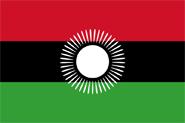


 Press Release - Developing of Impact Indicators for the Ecosystem-based Adaptation Project in Uganda takes off, 31 Jul 2014
Press Release - Developing of Impact Indicators for the Ecosystem-based Adaptation Project in Uganda takes off, 31 Jul 2014